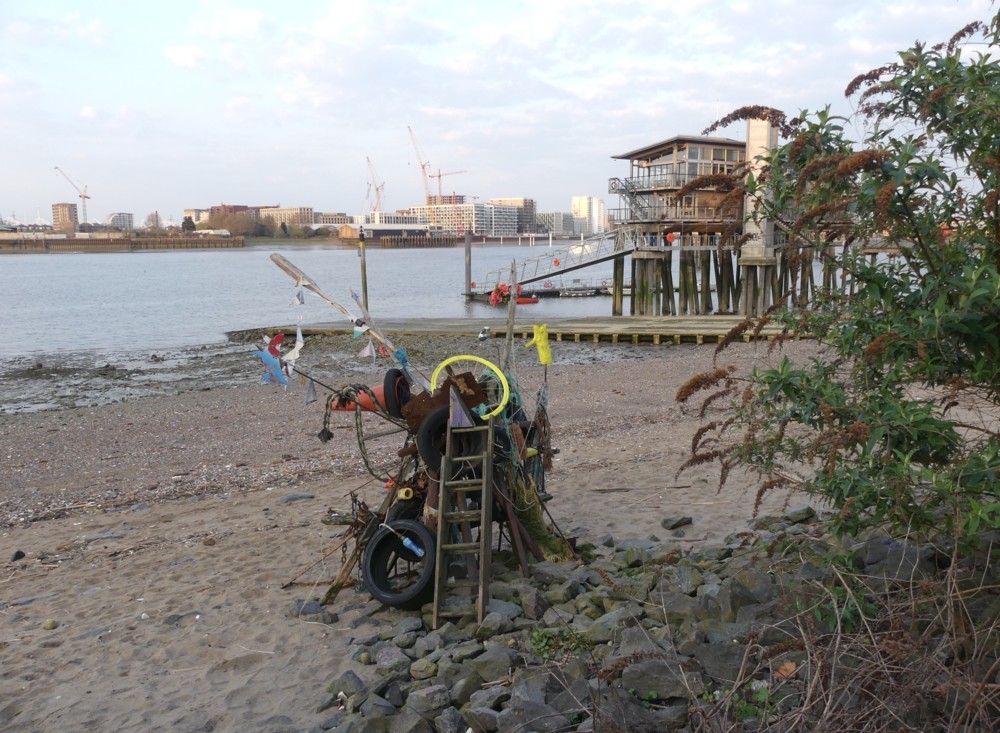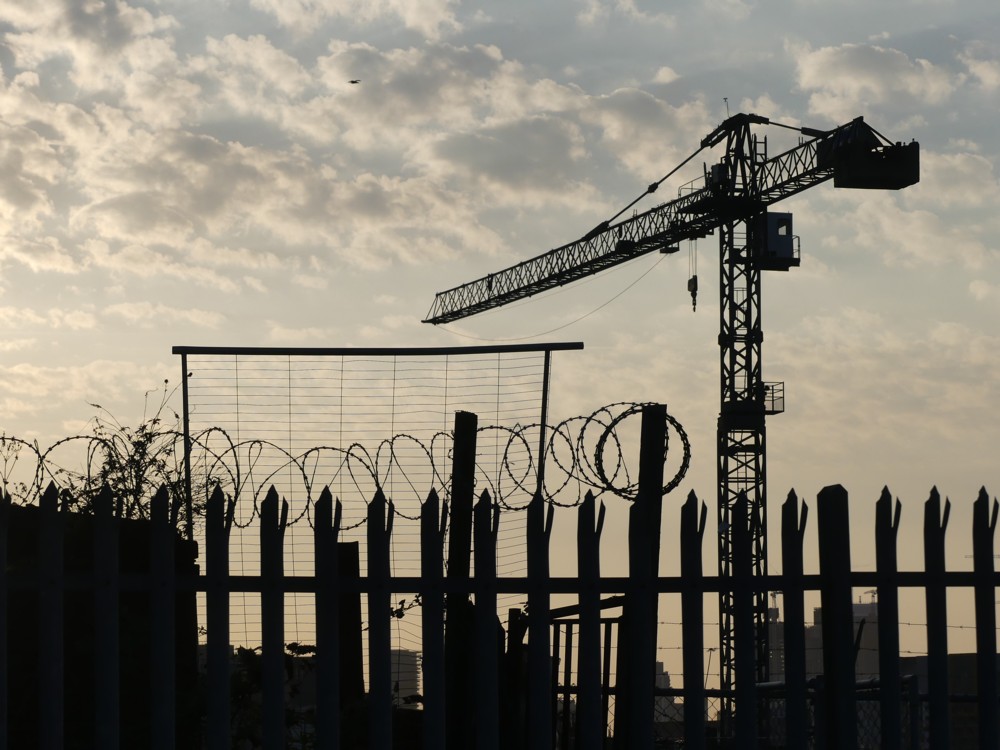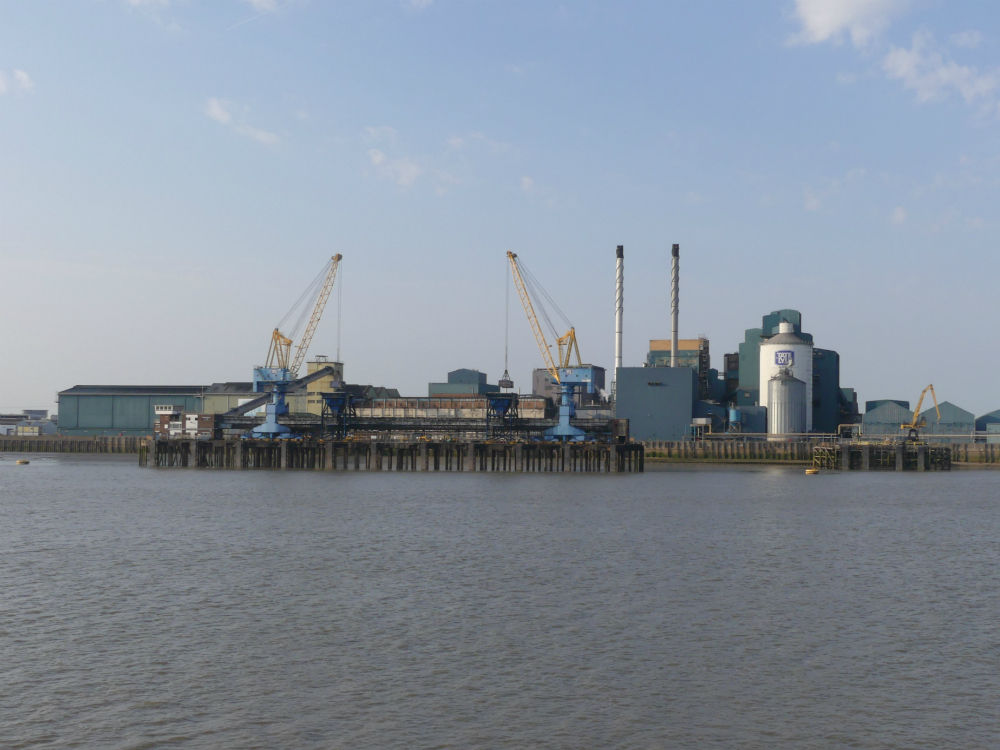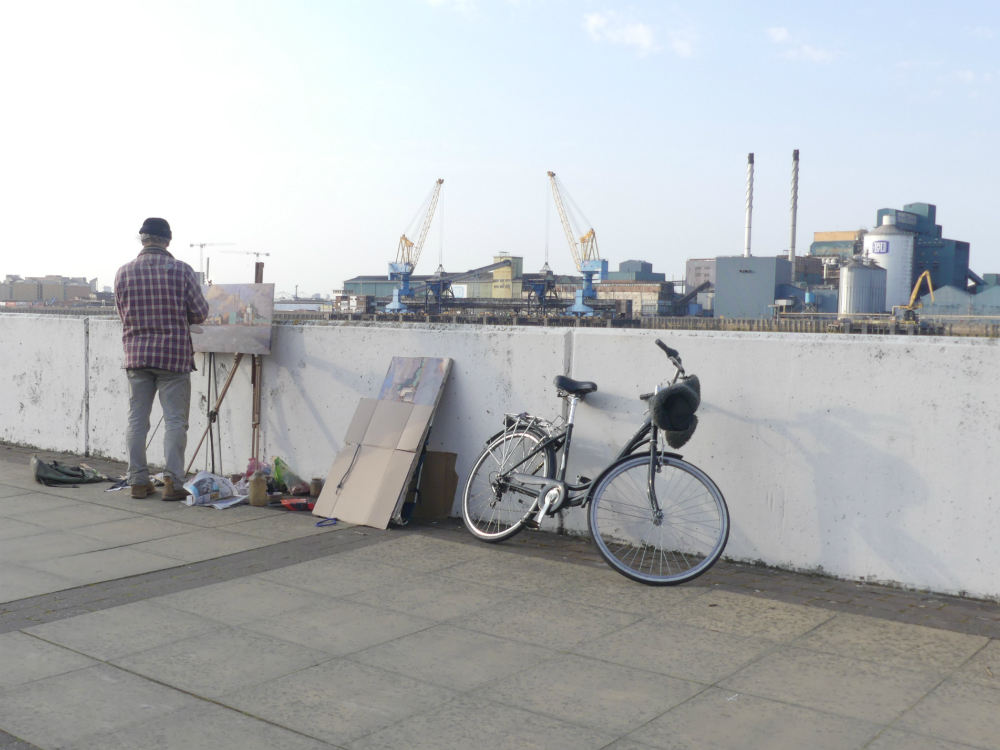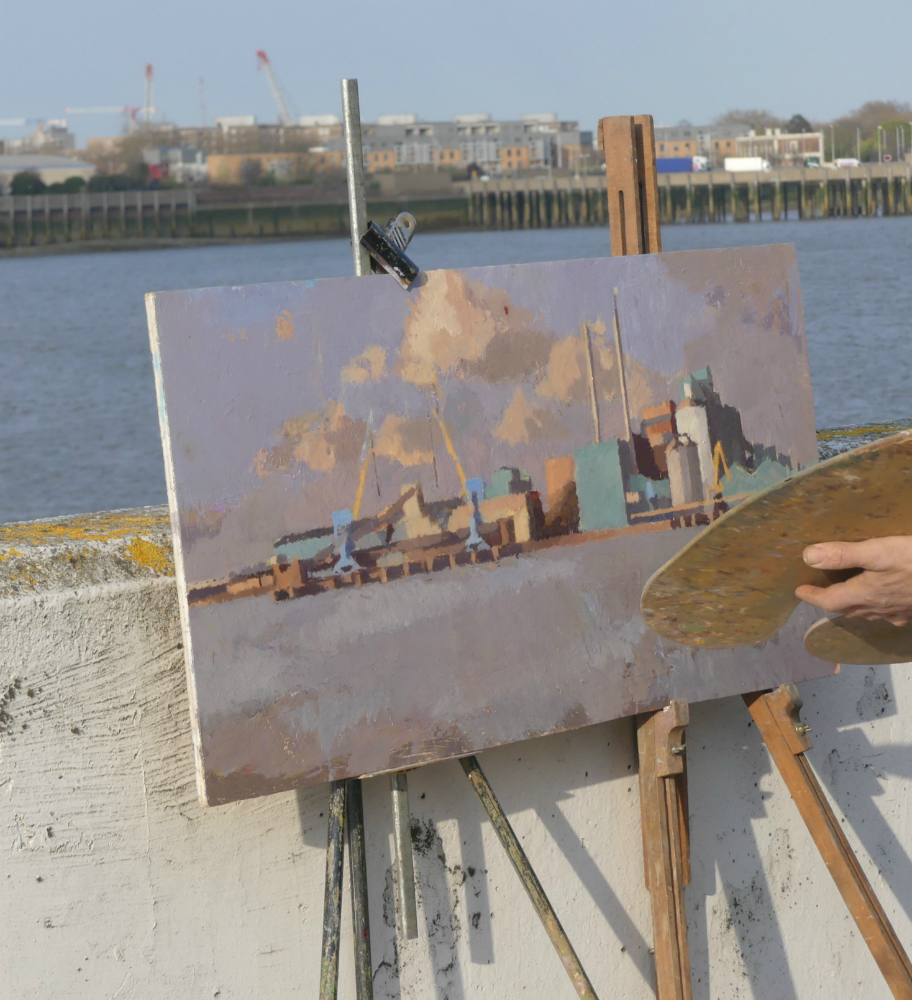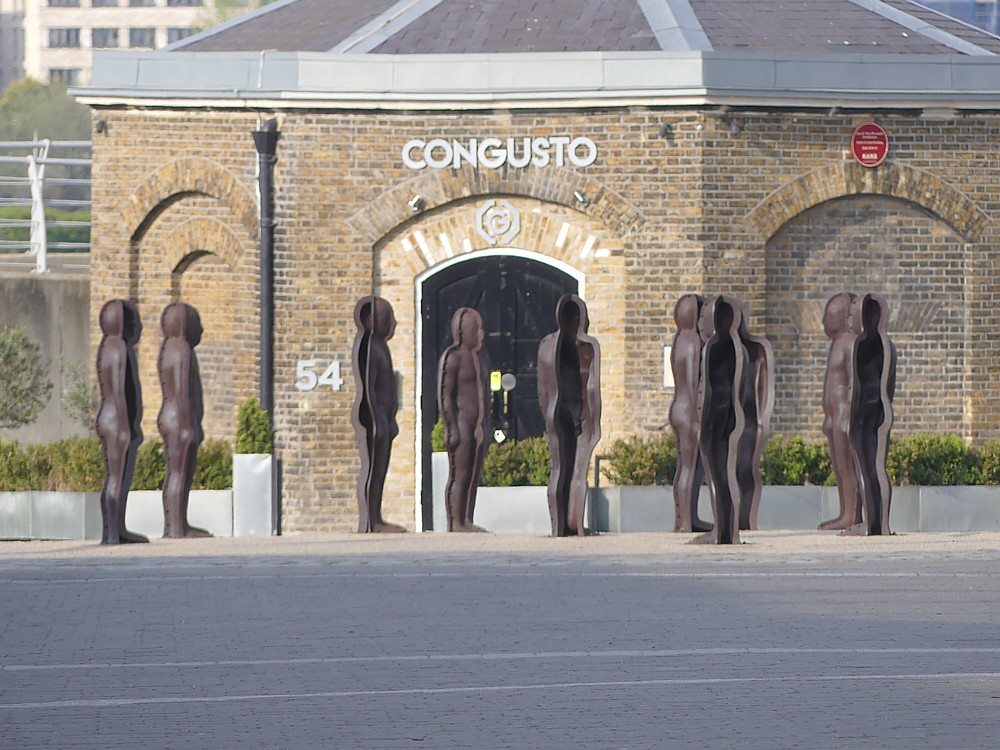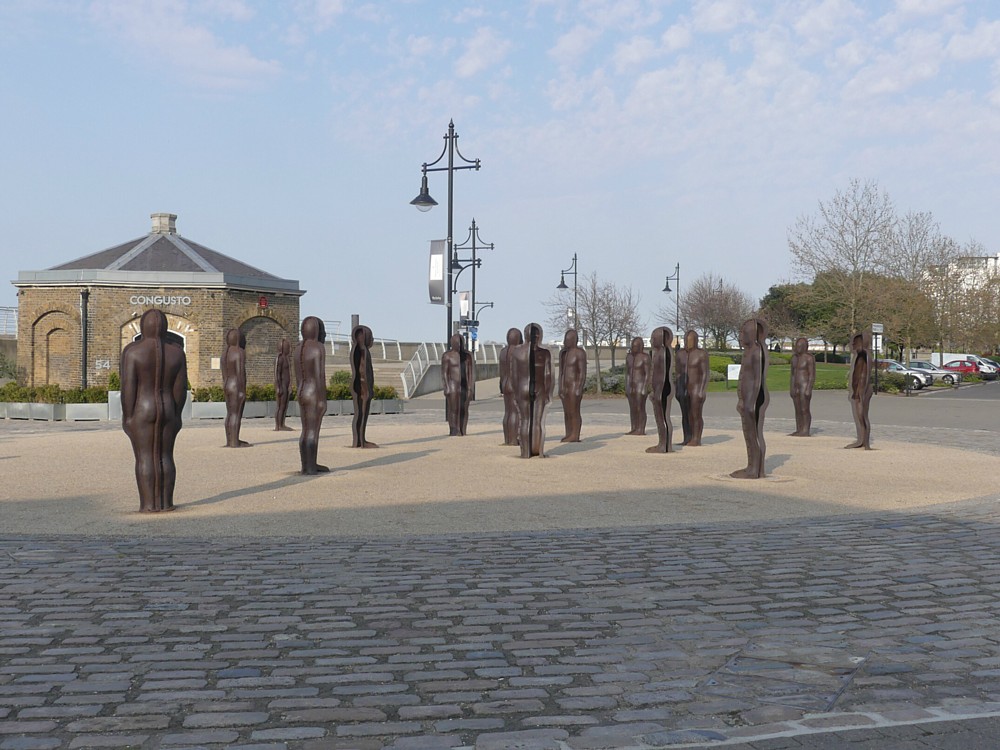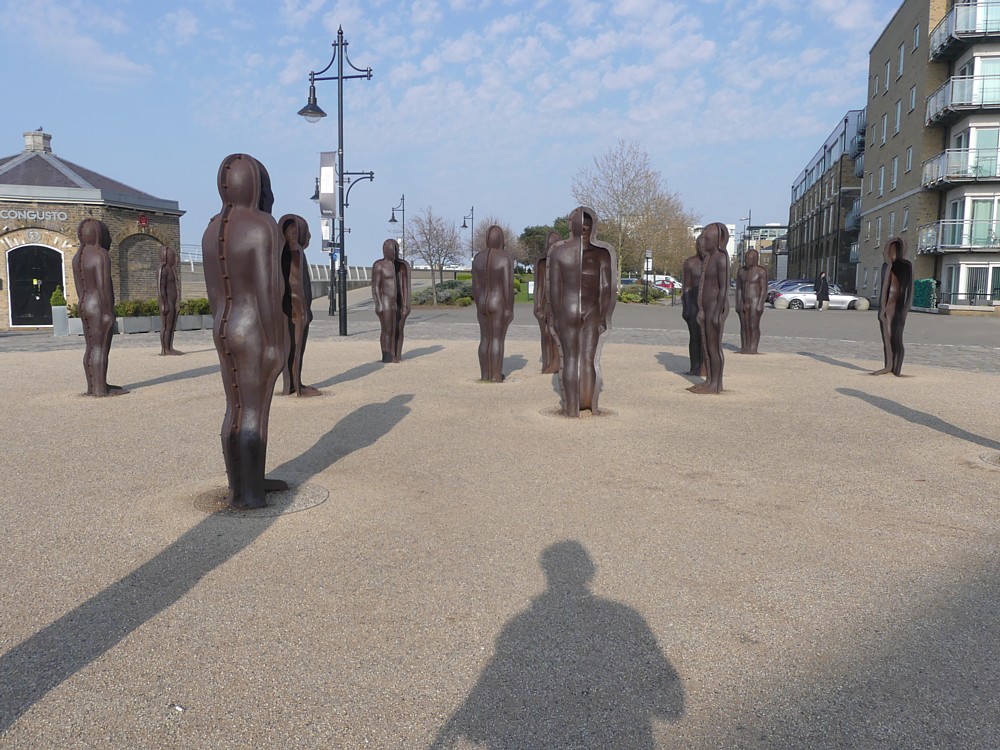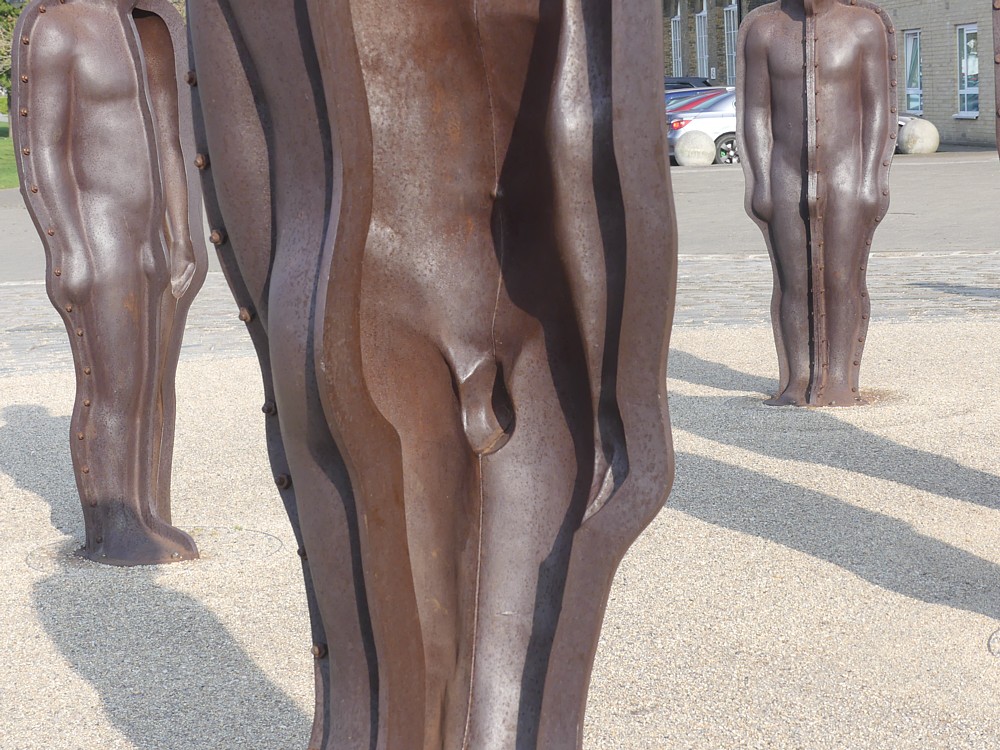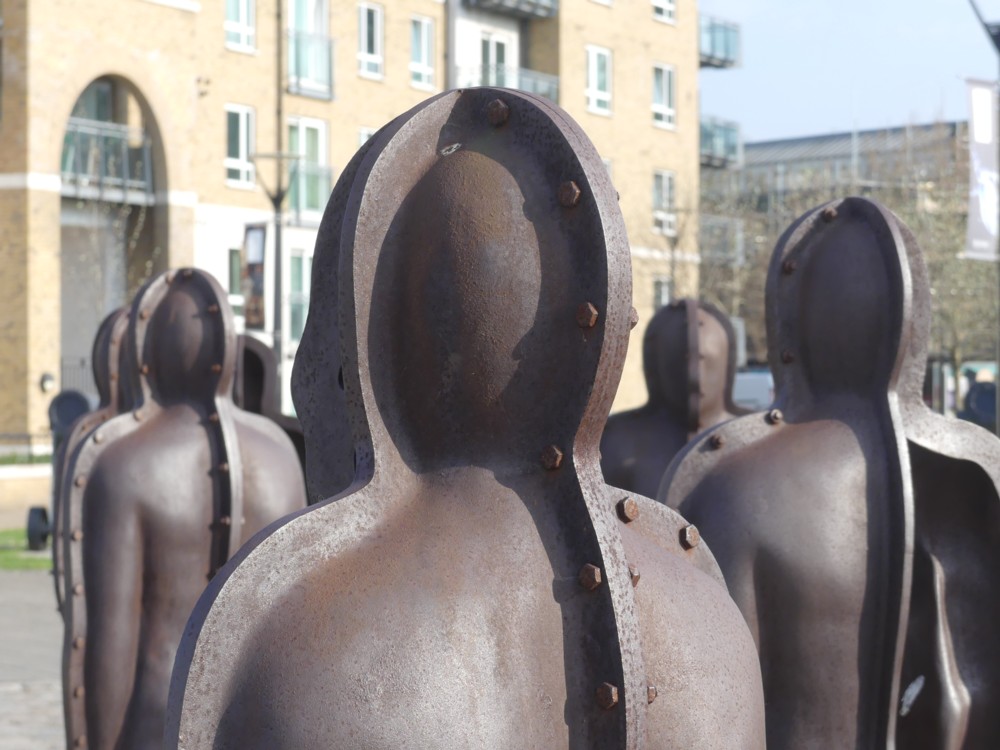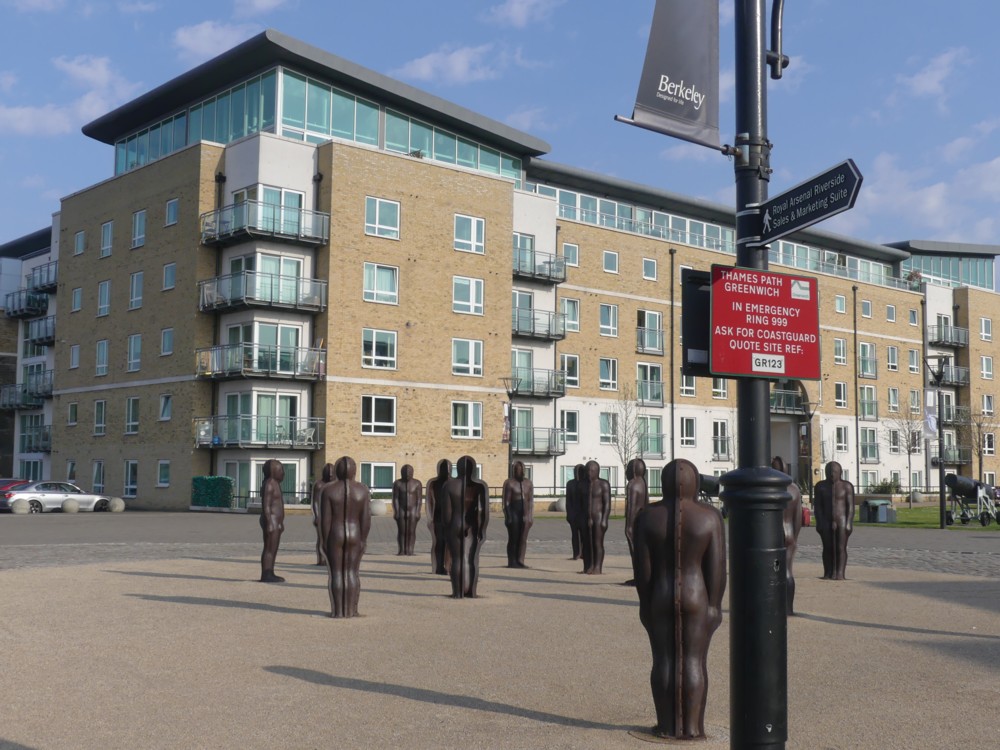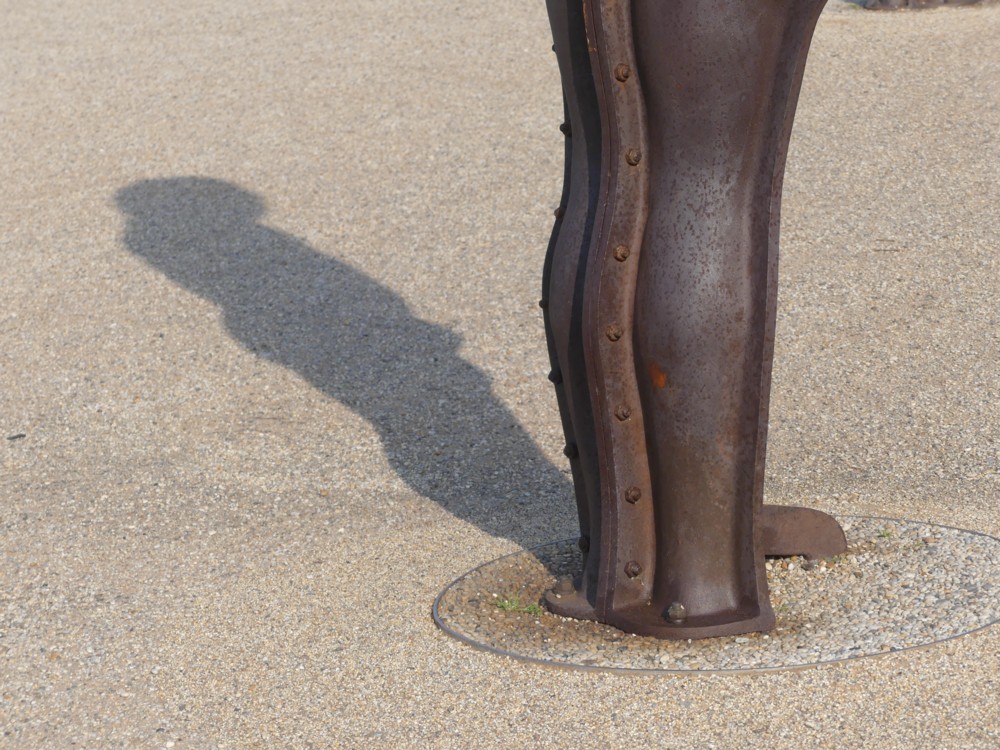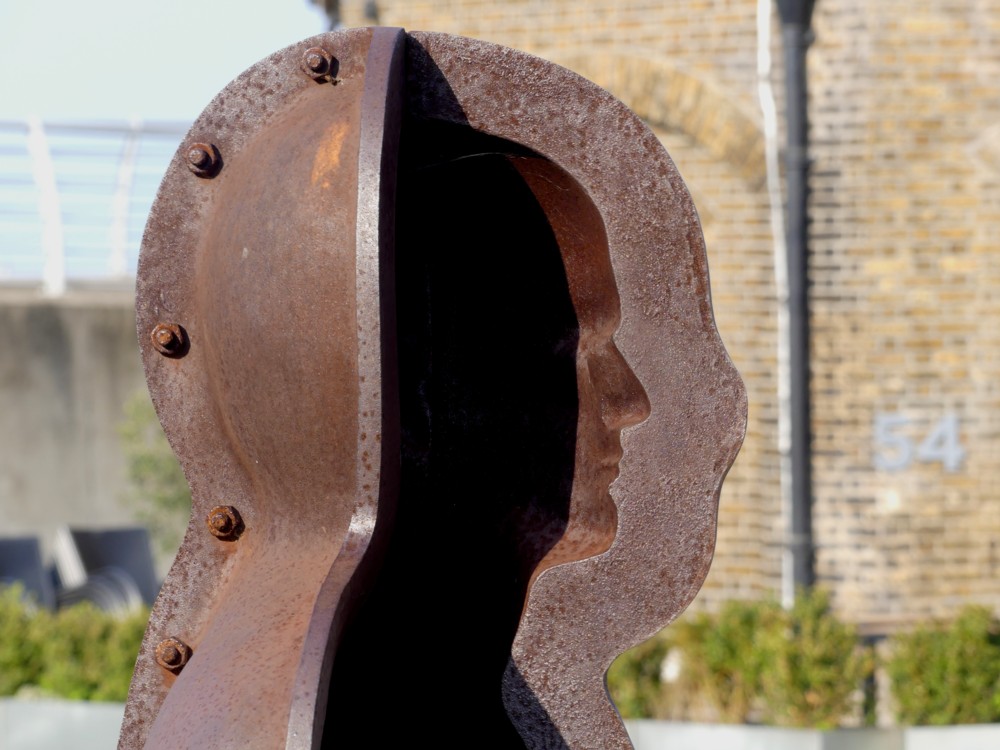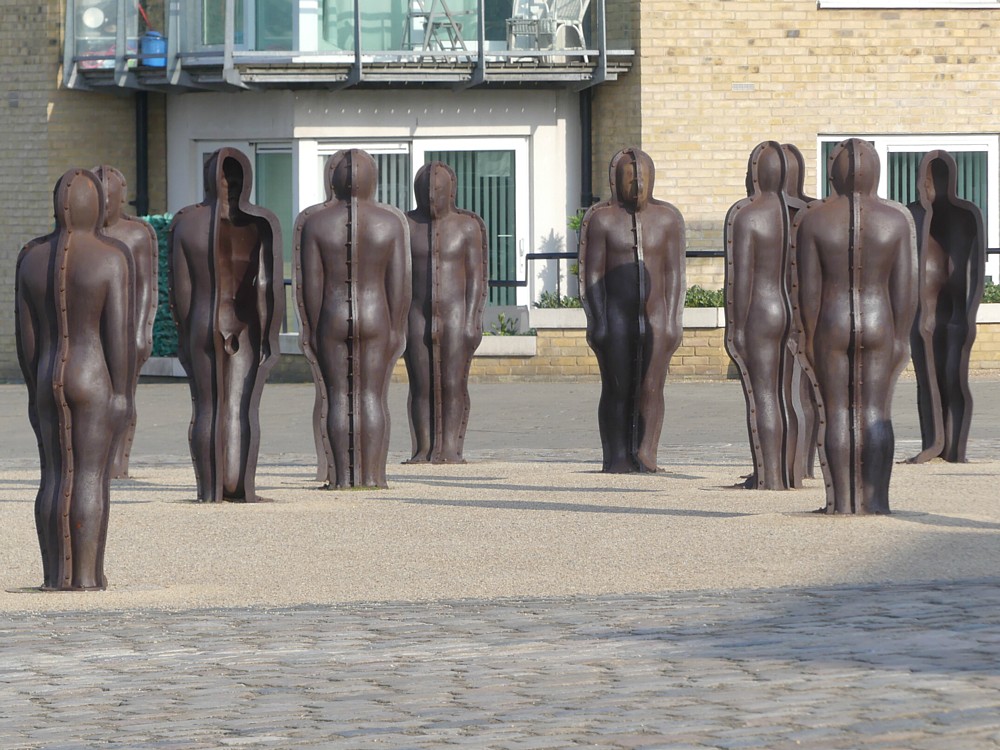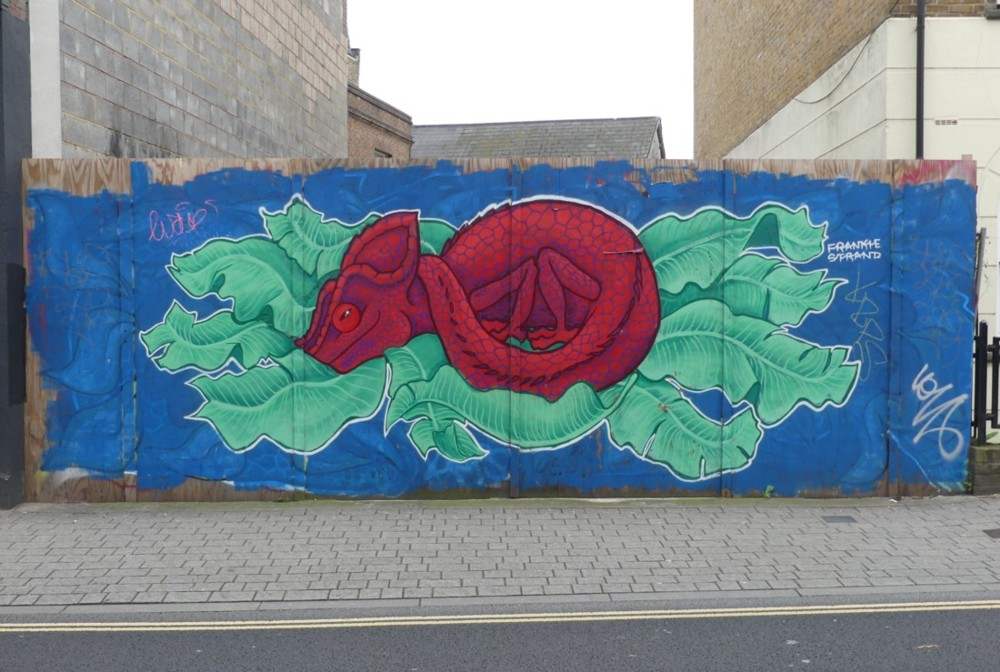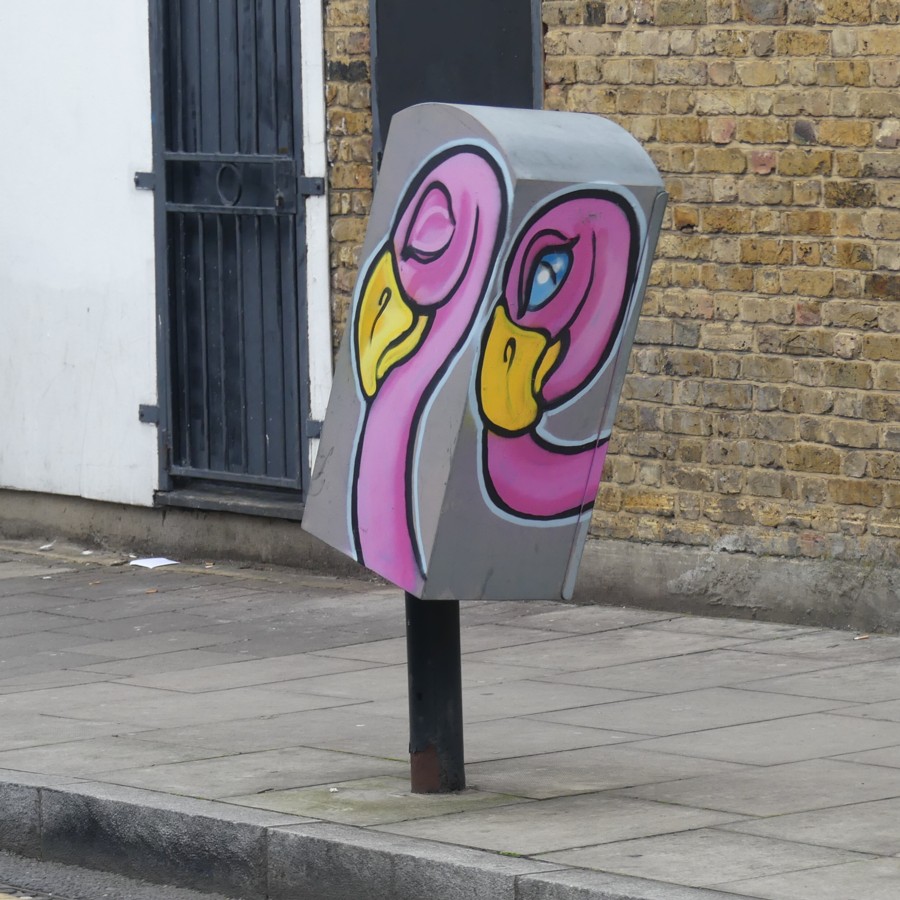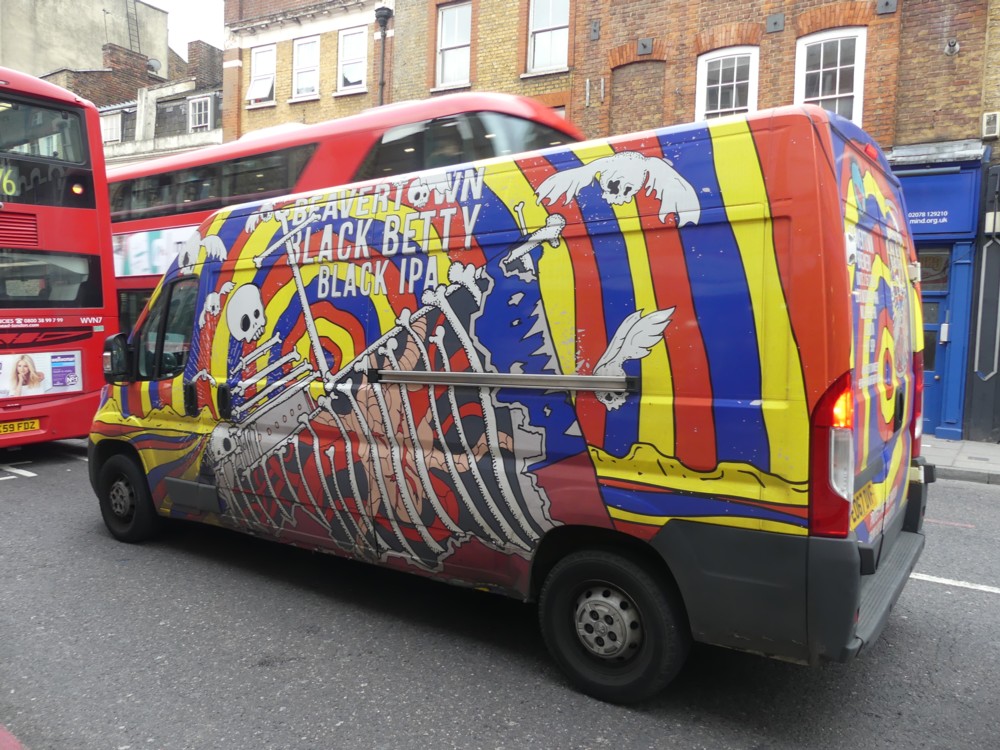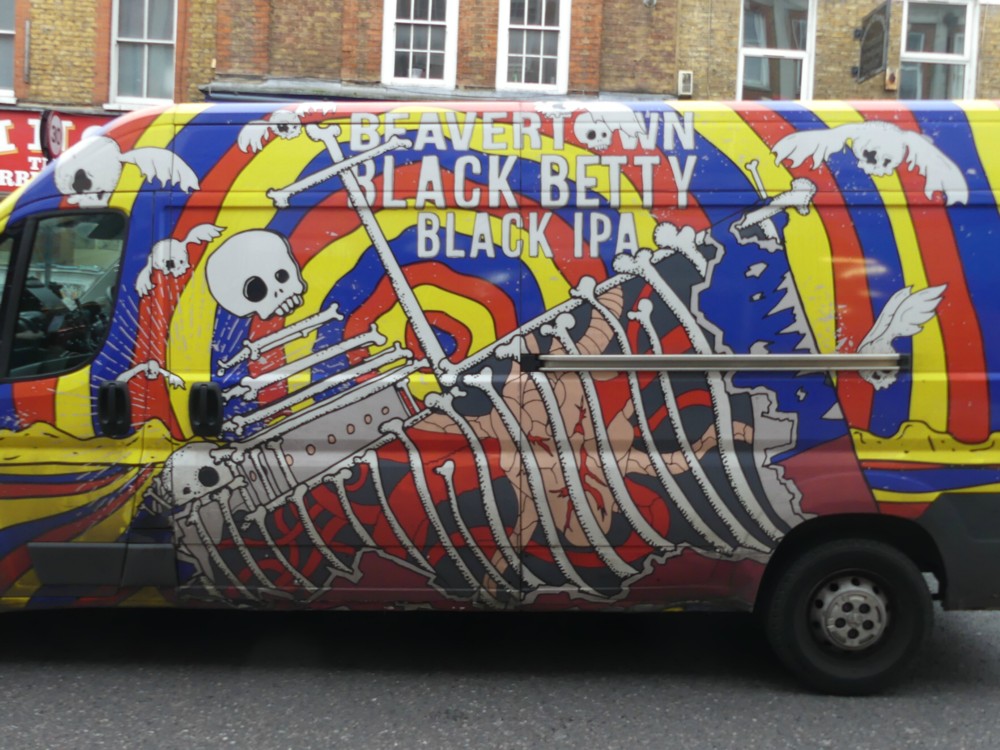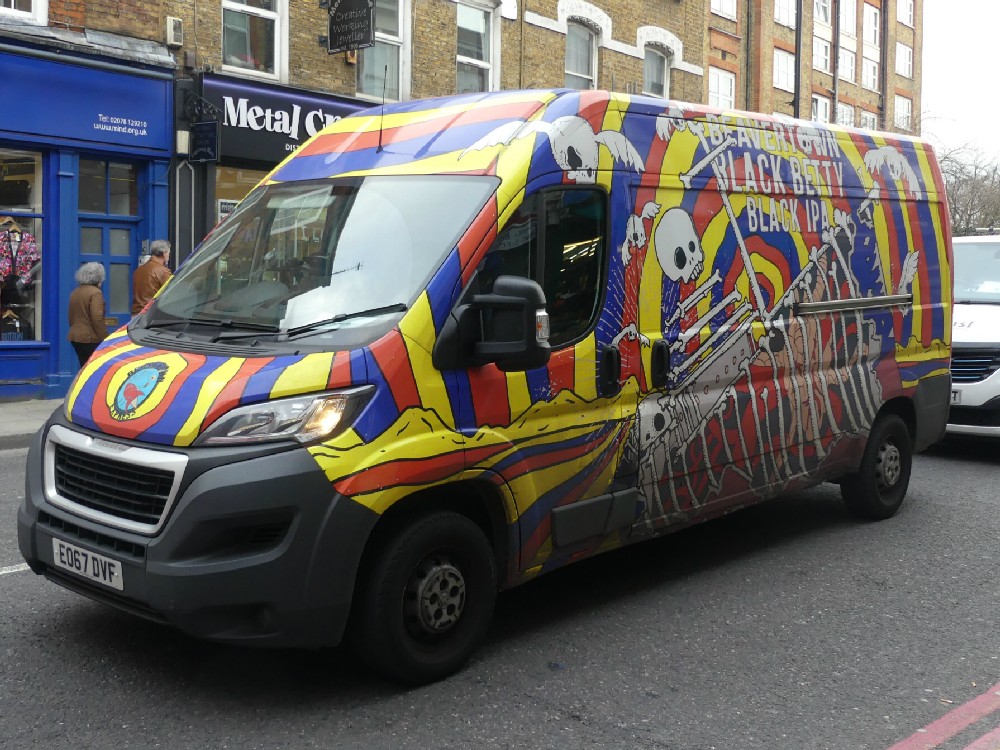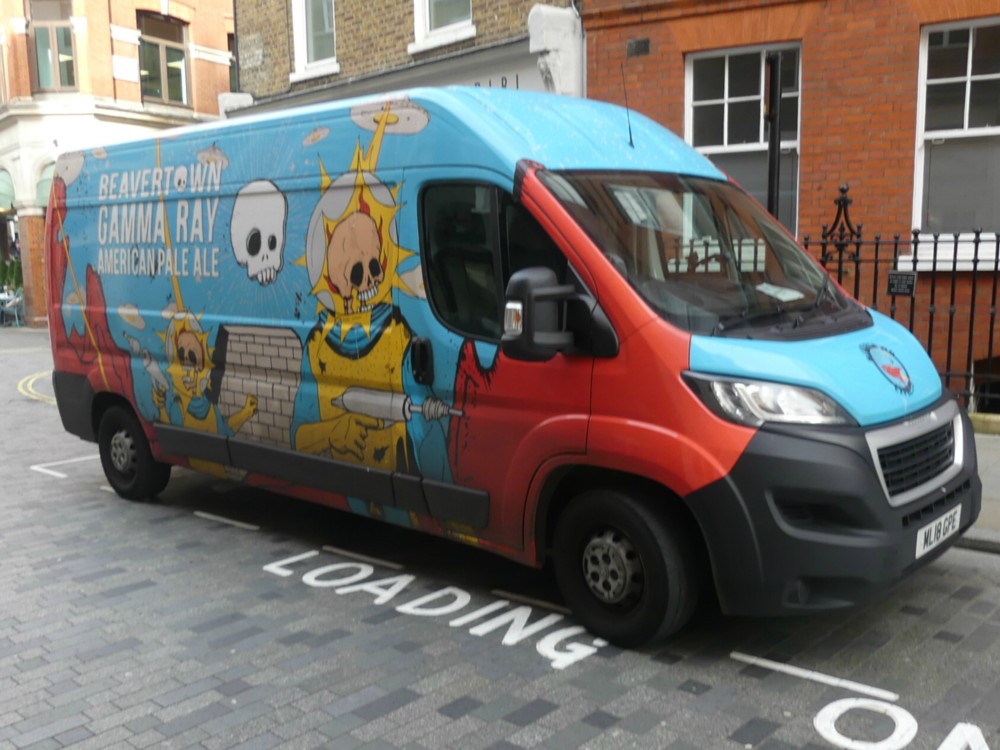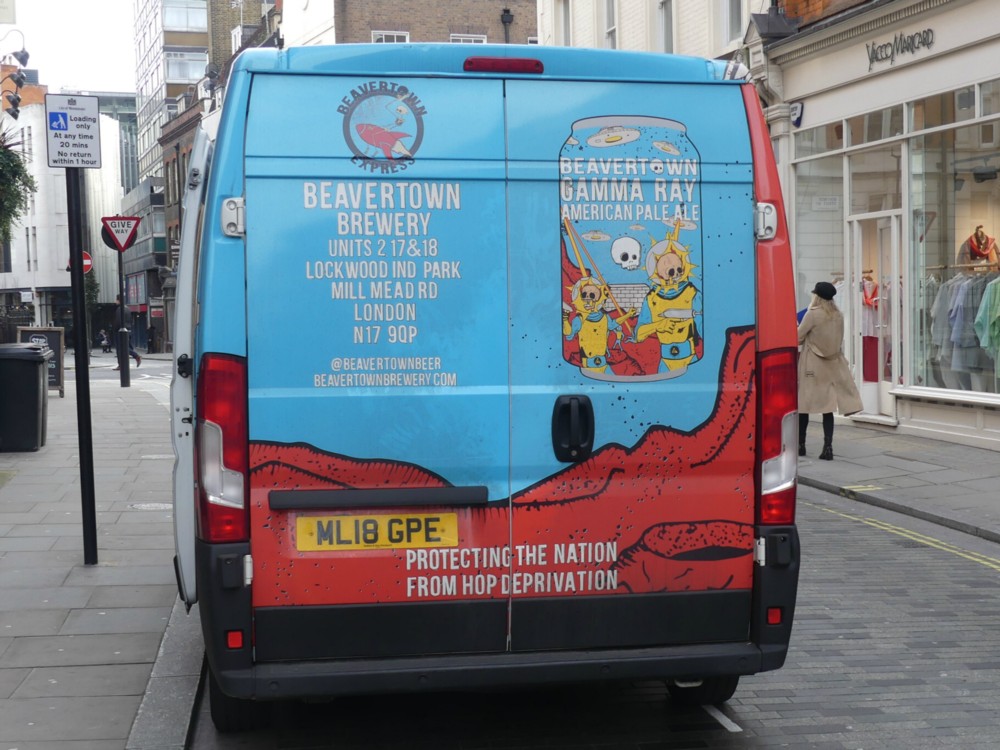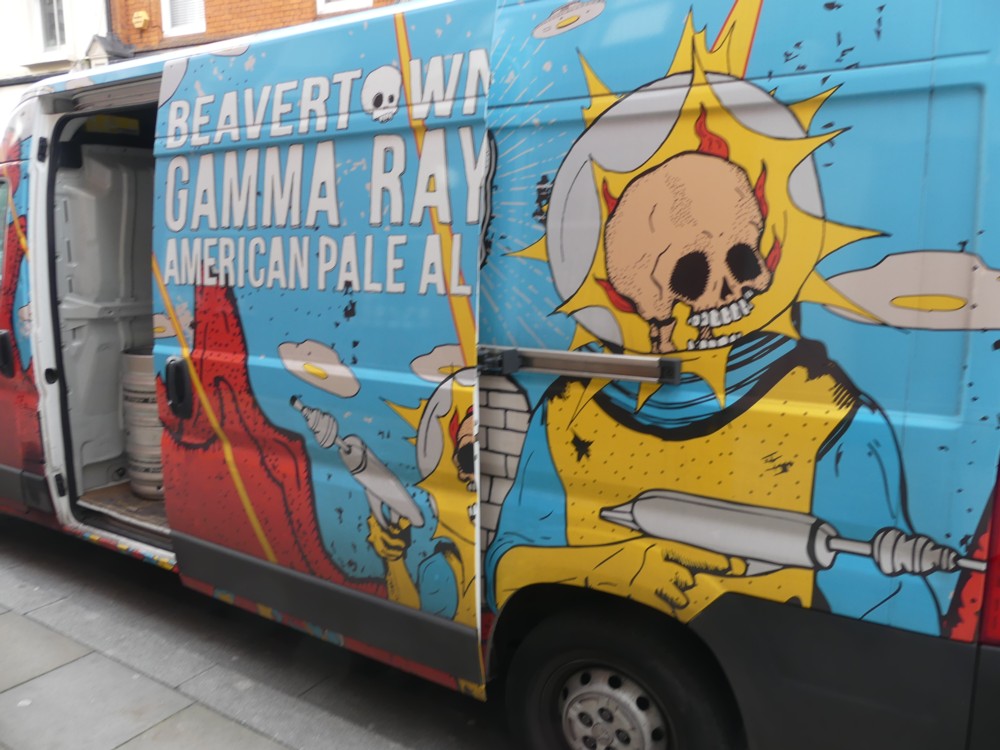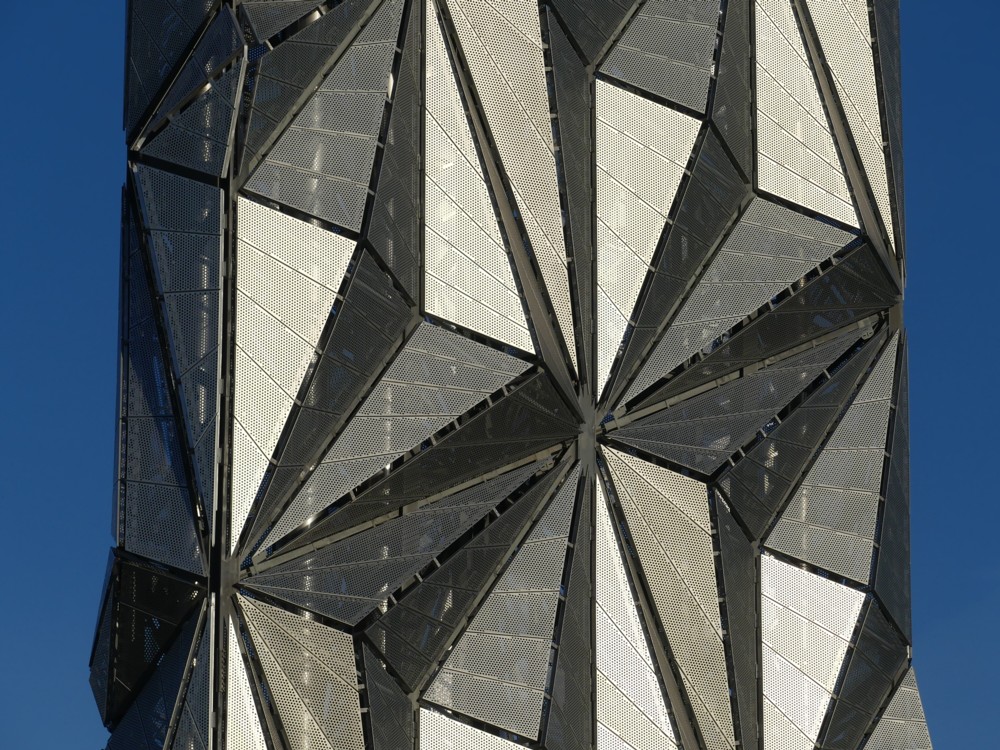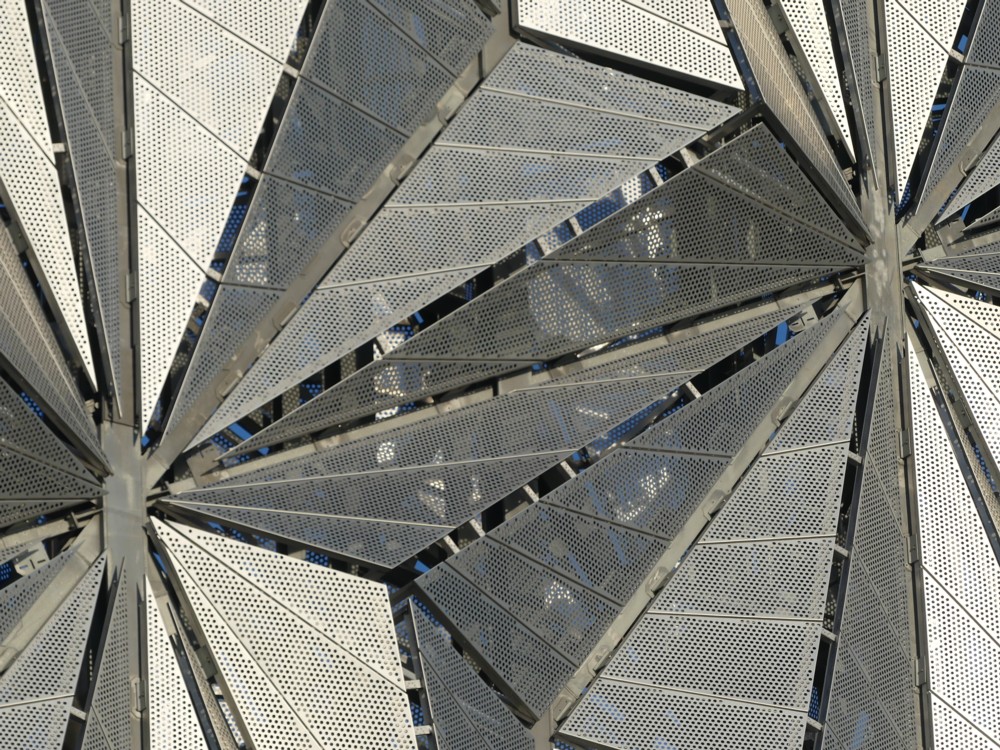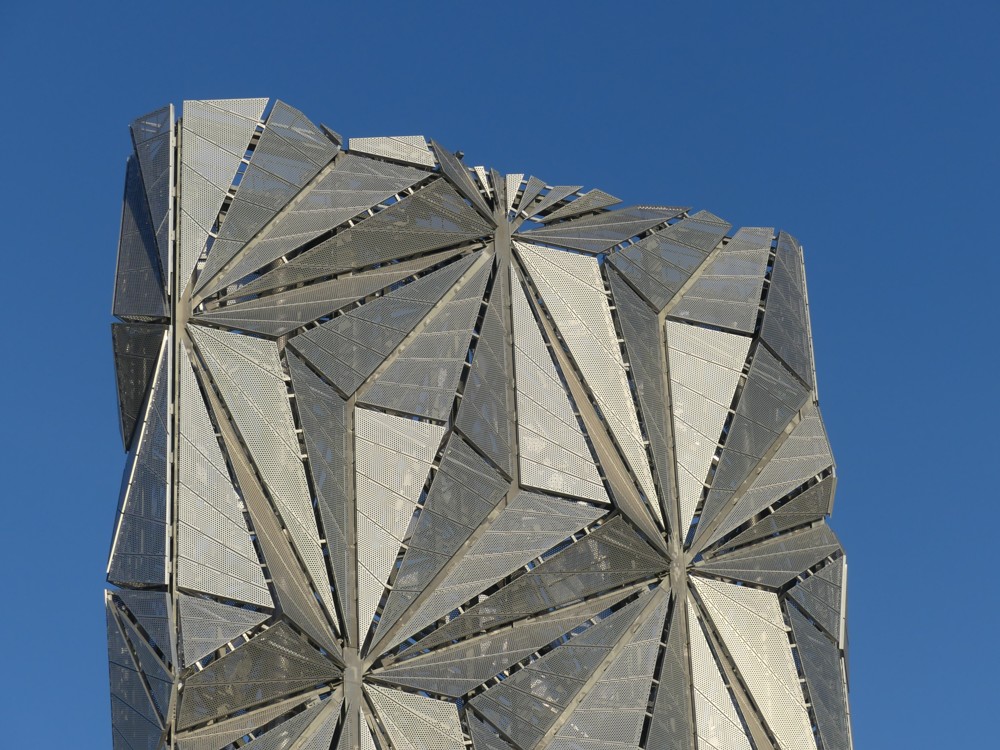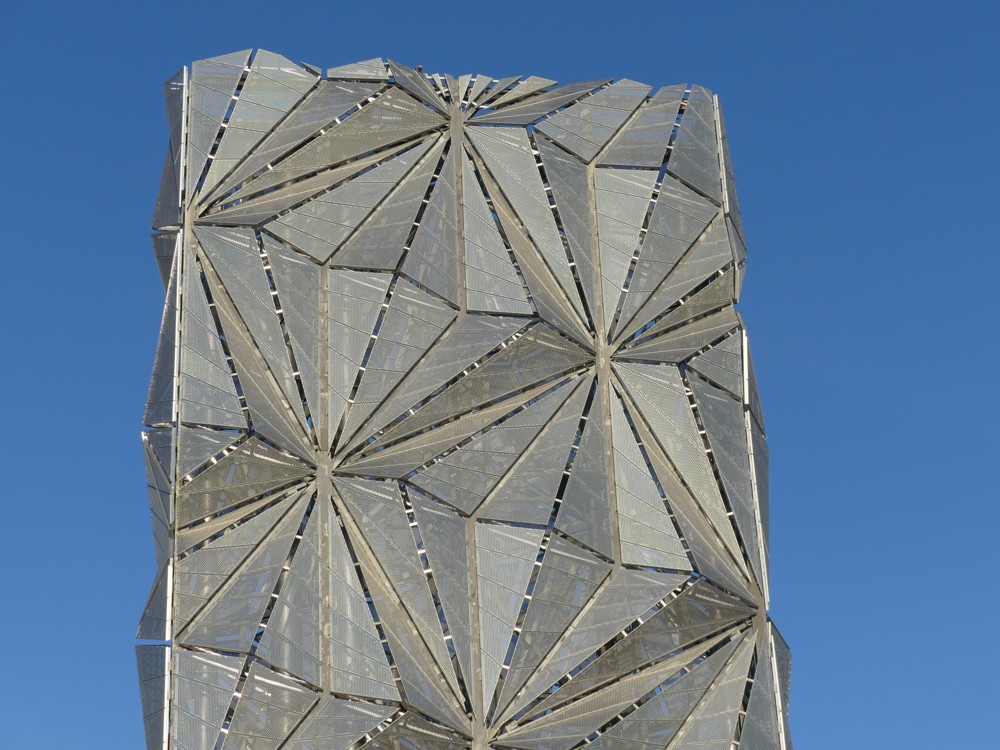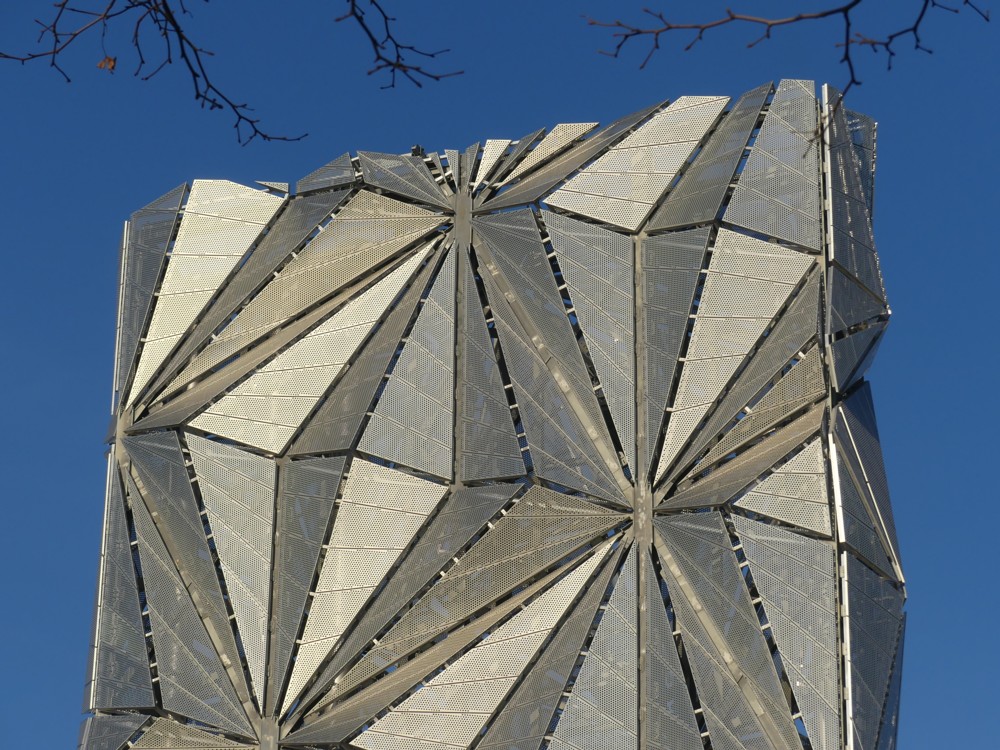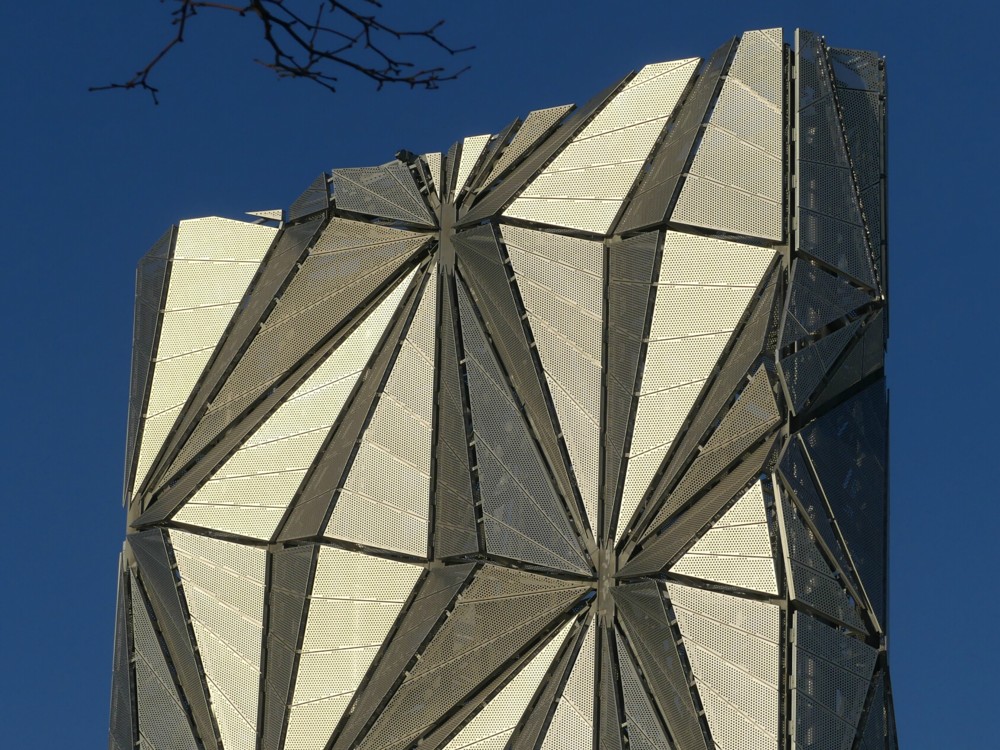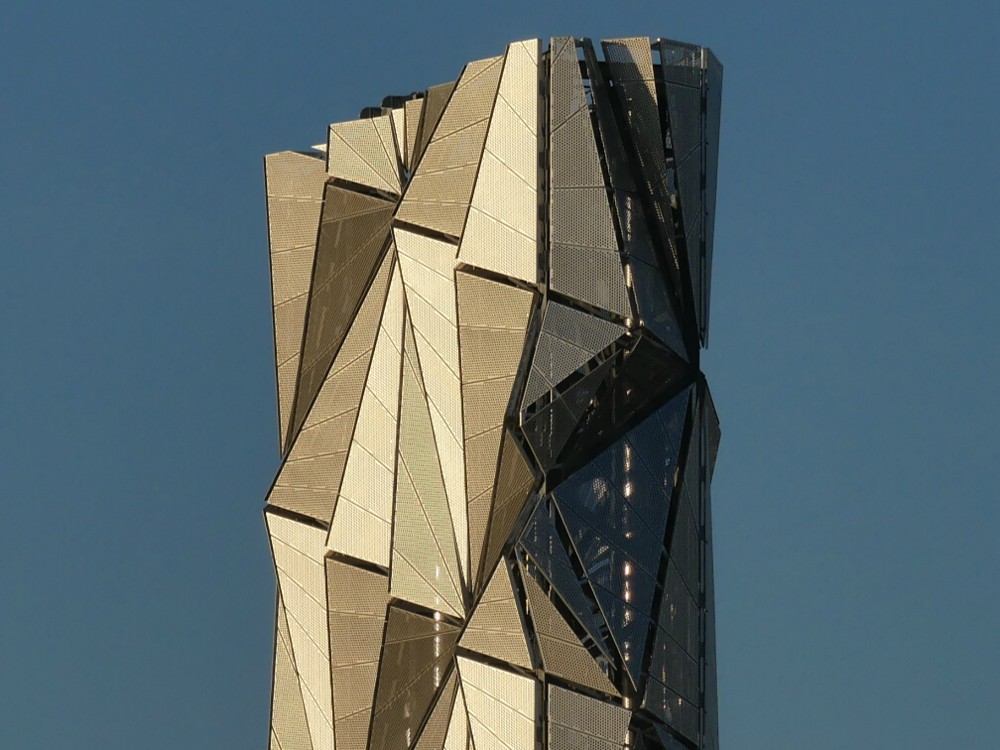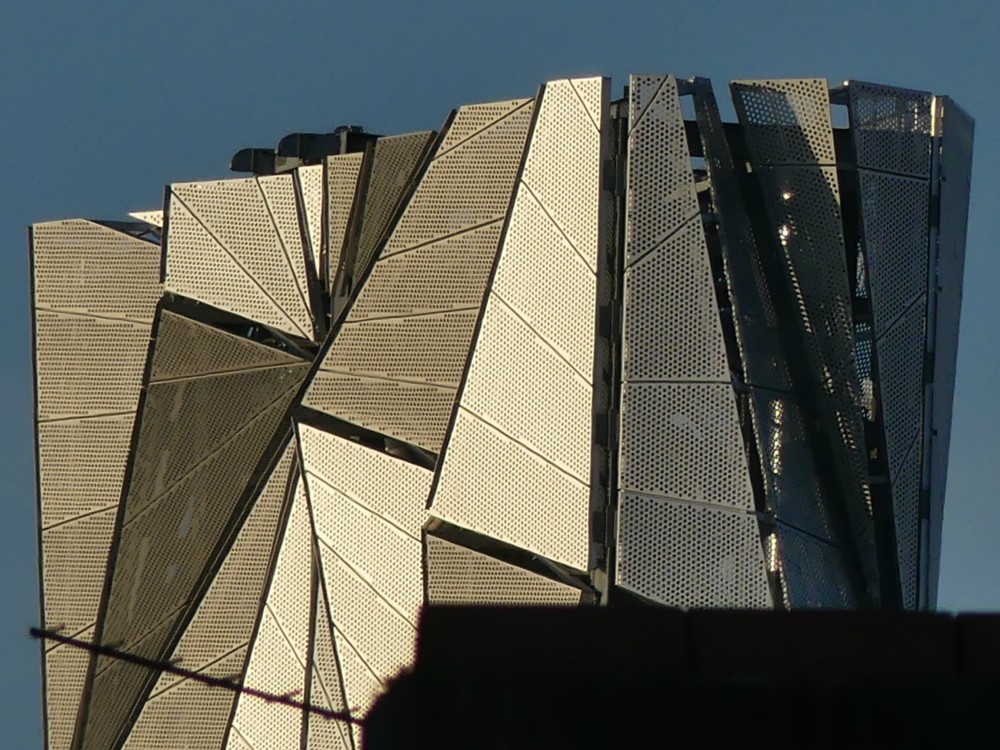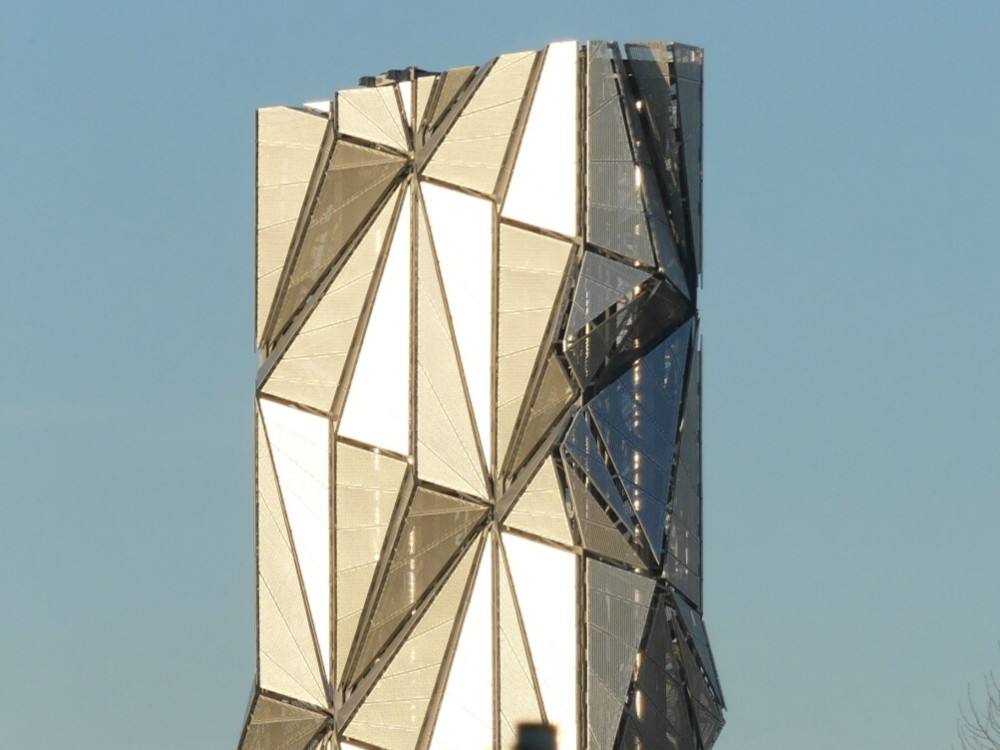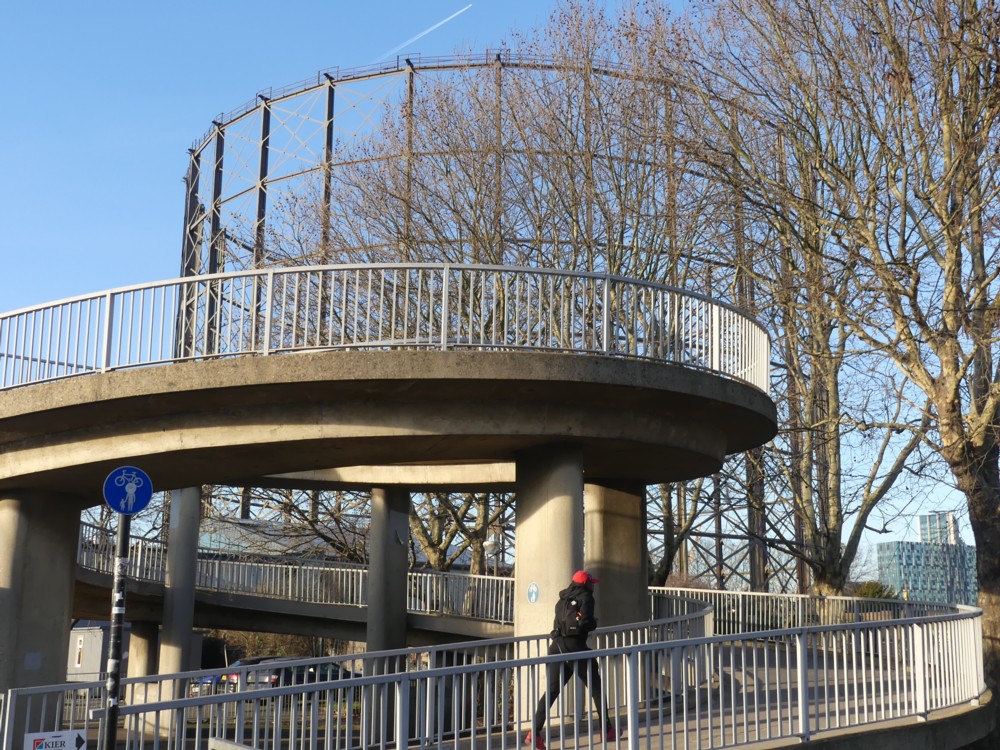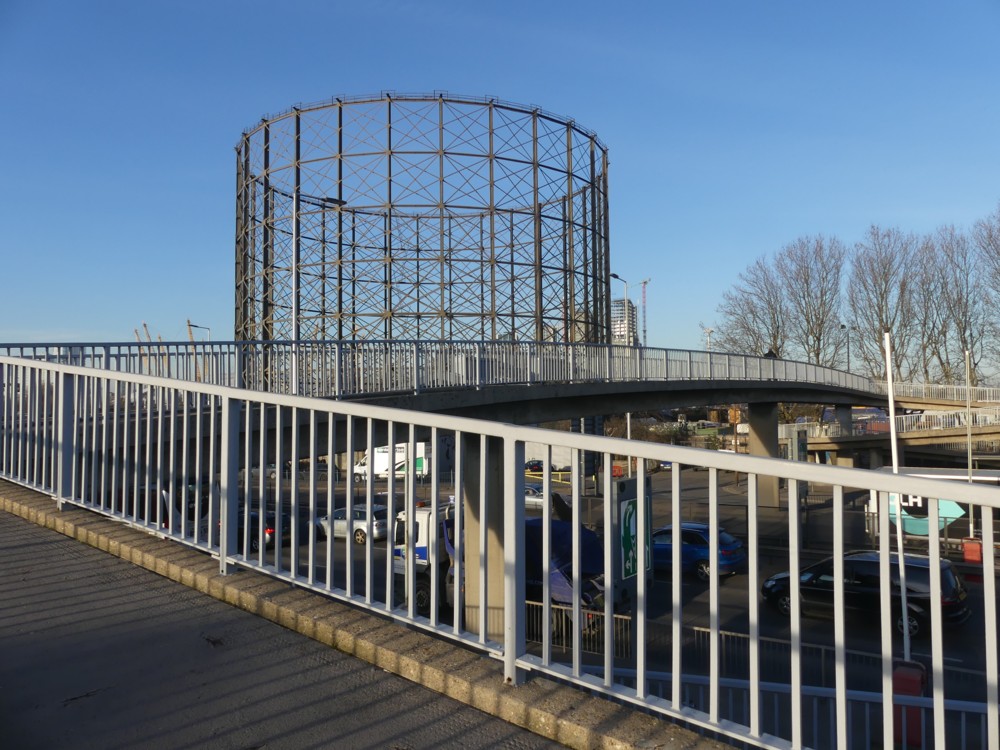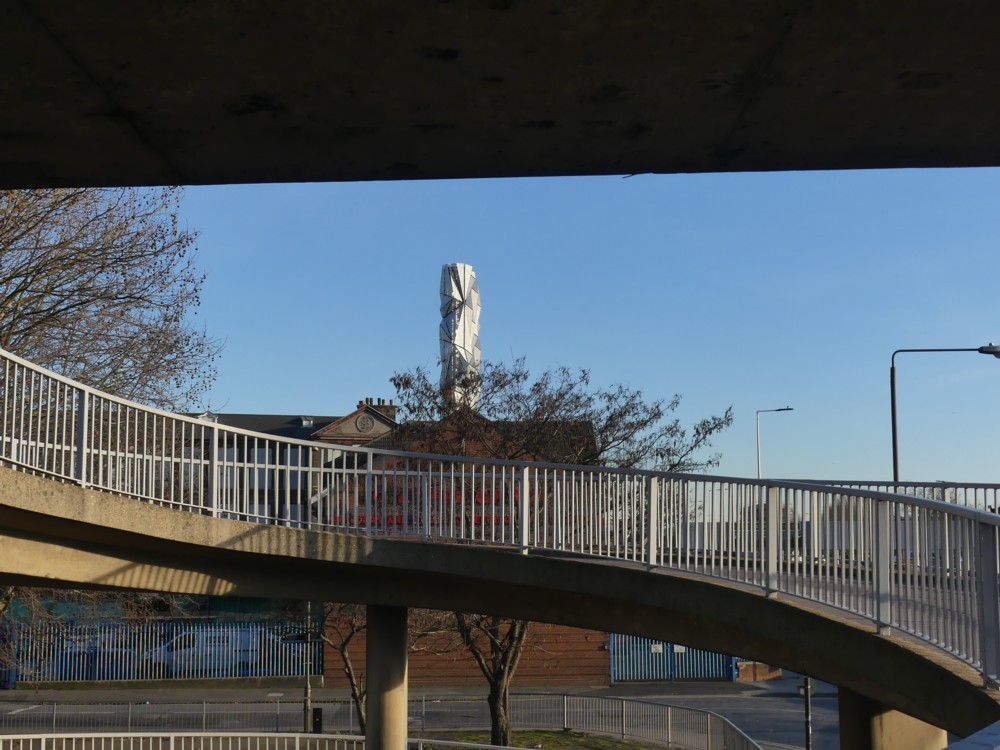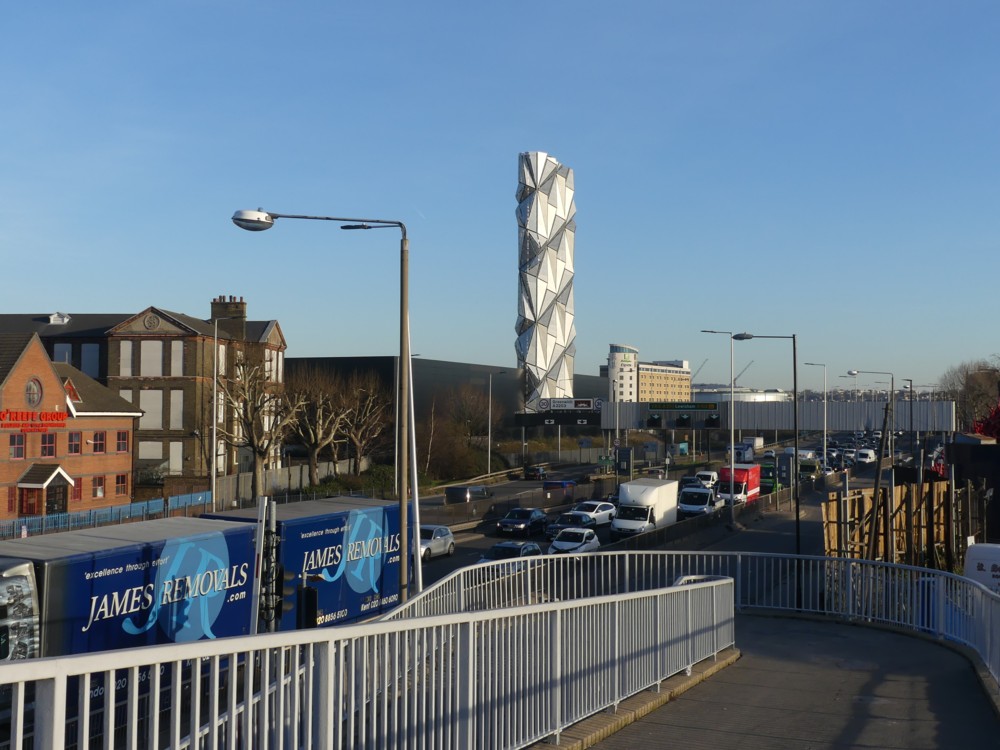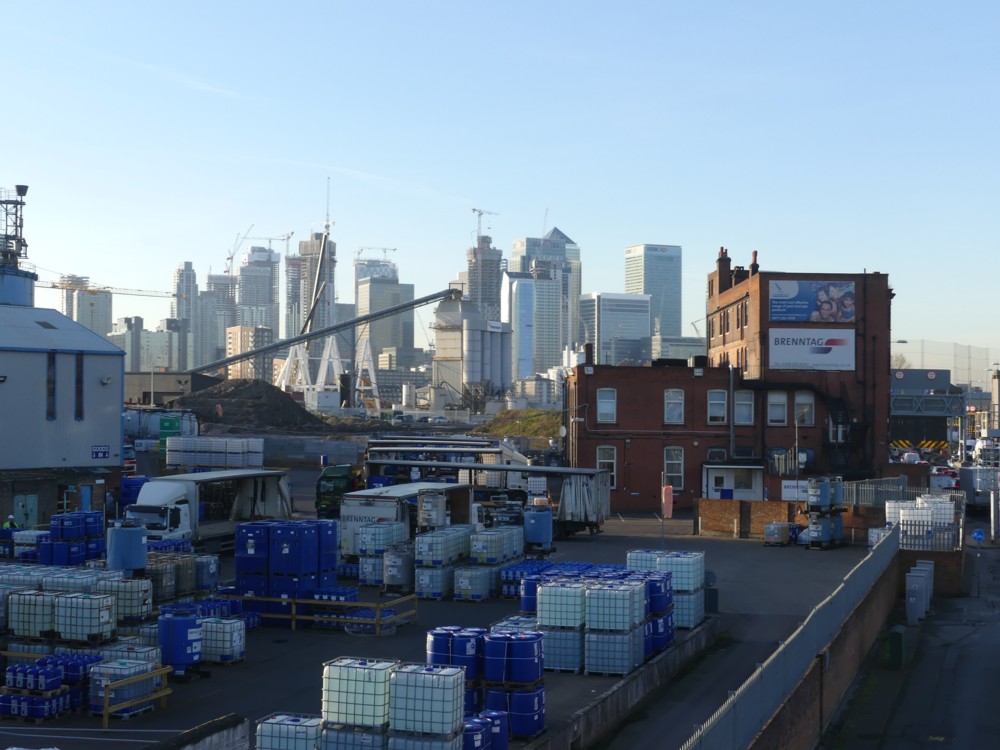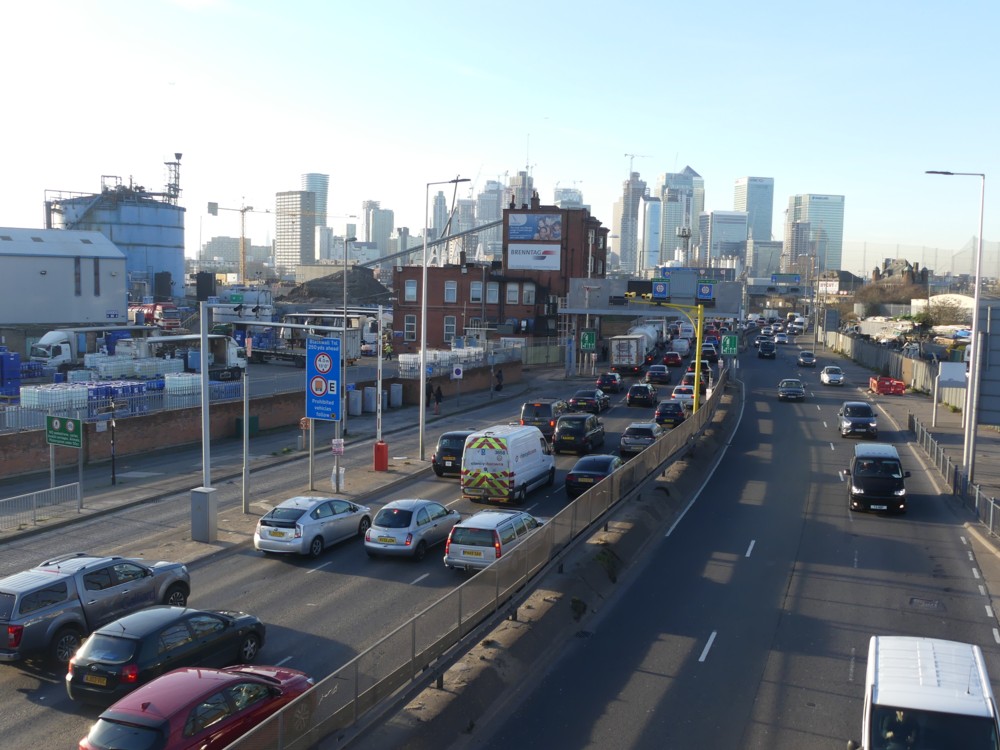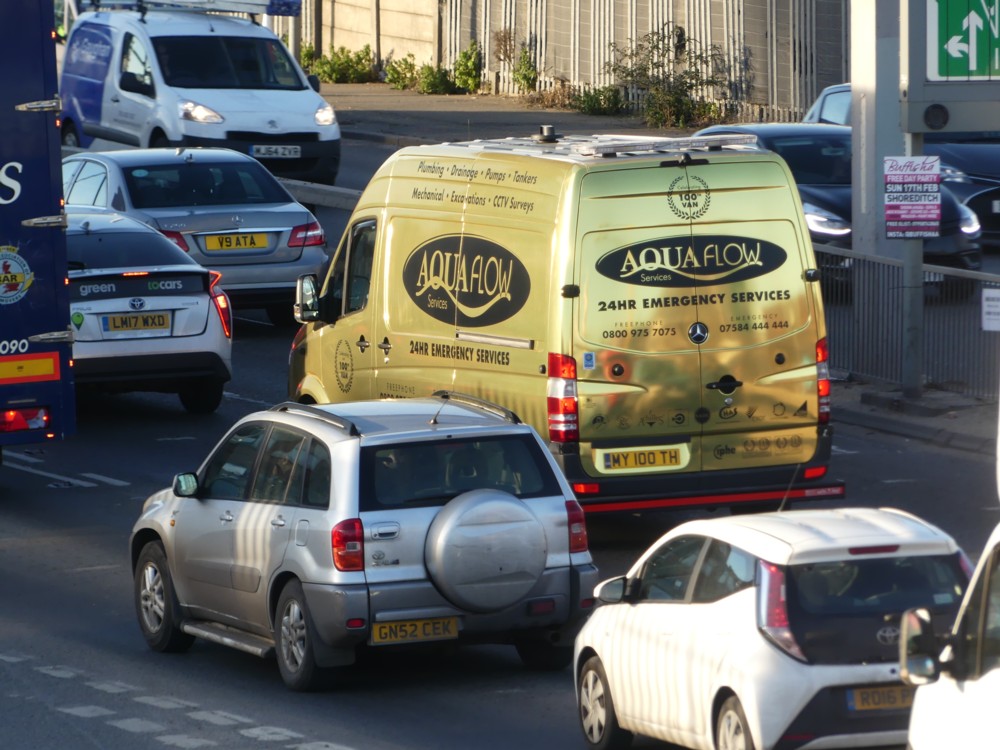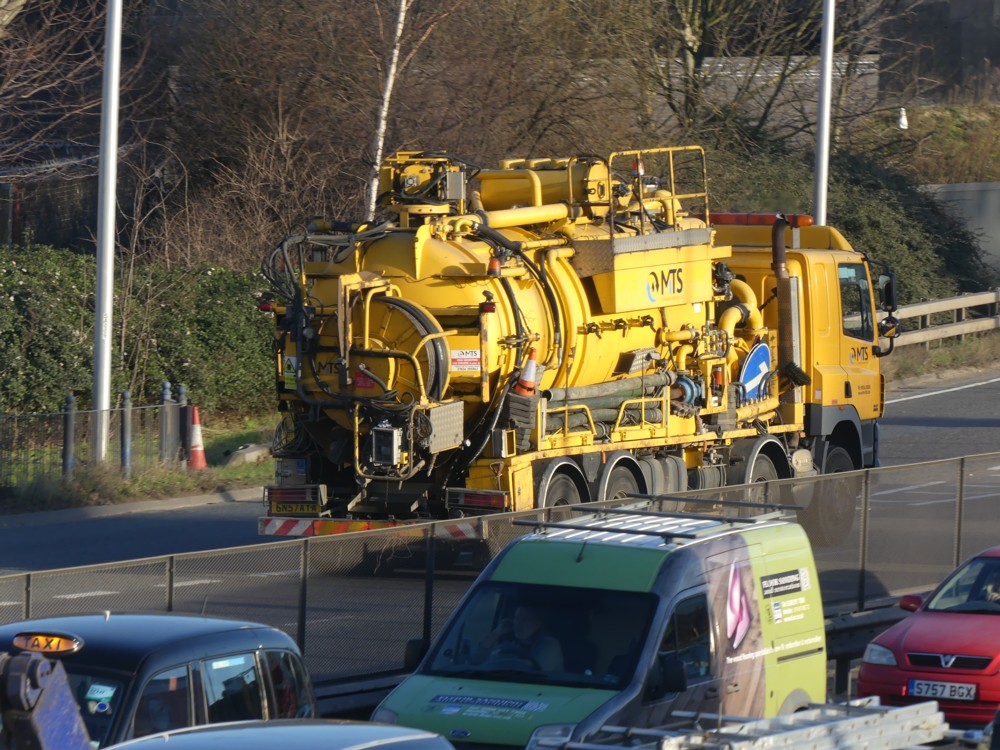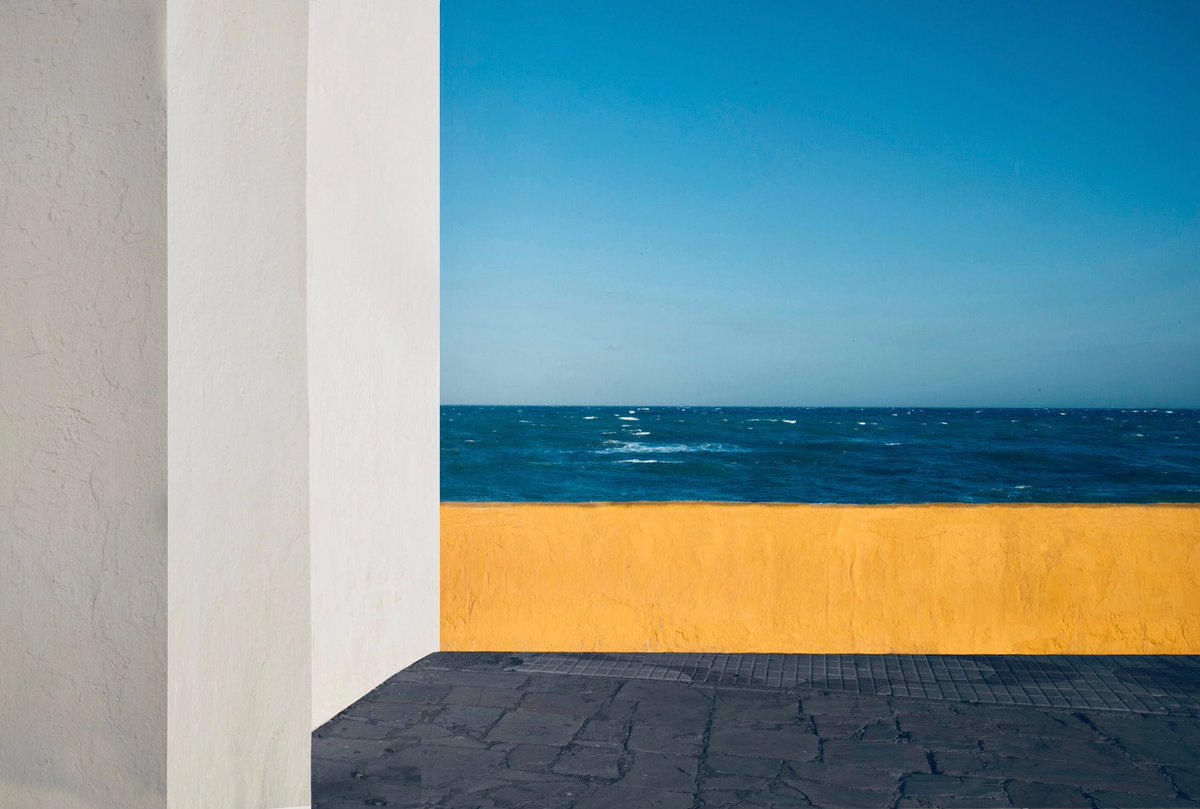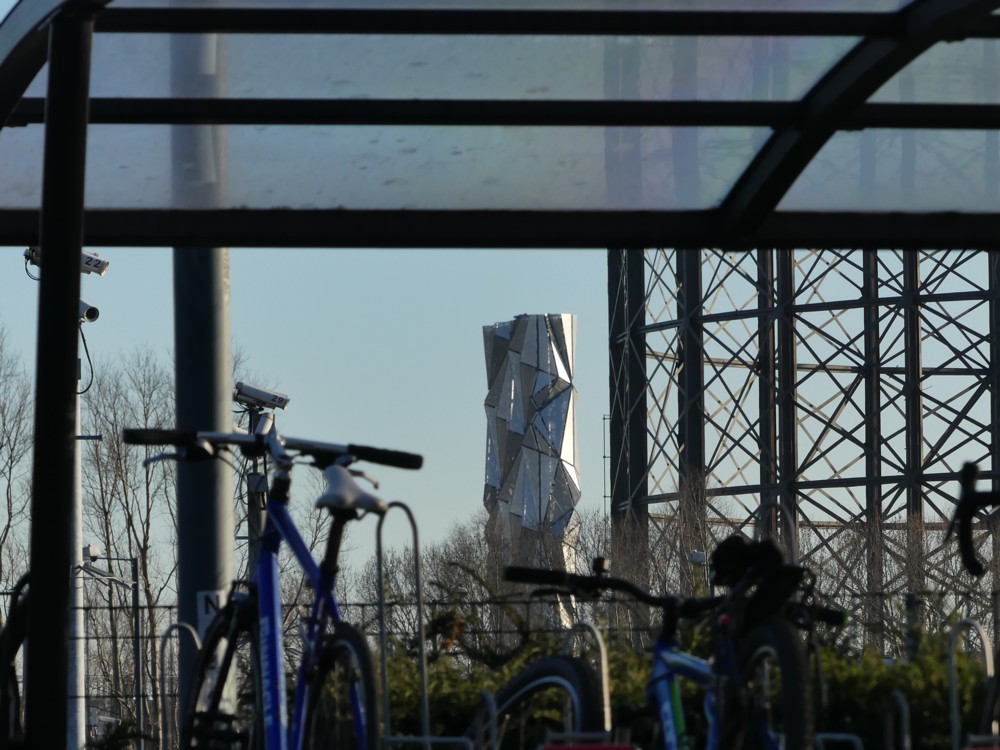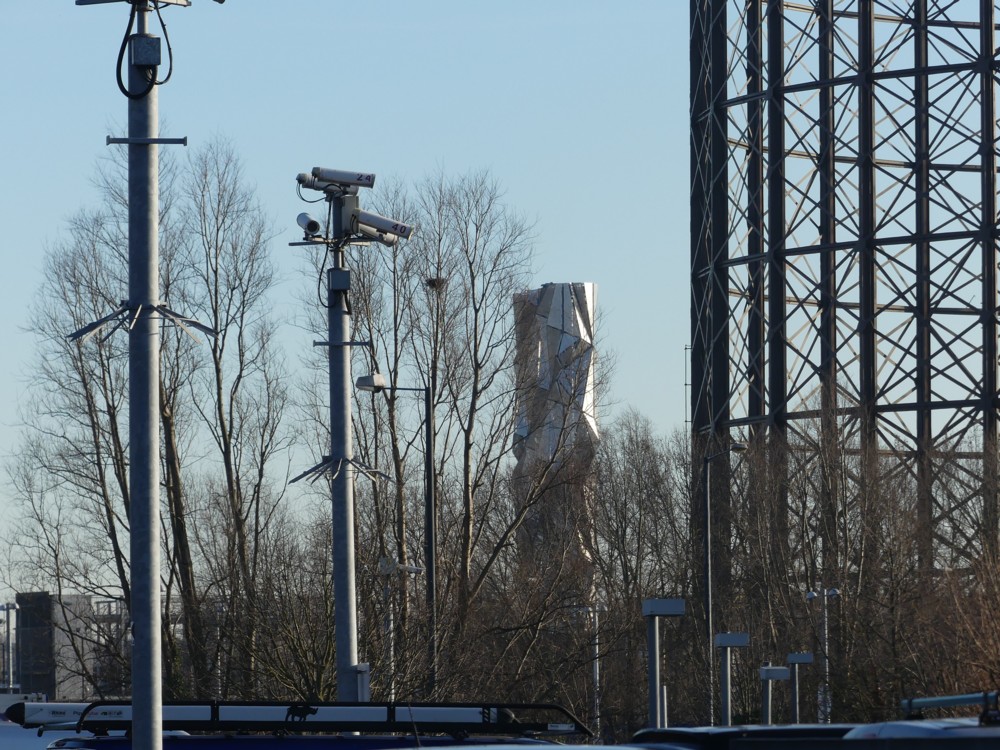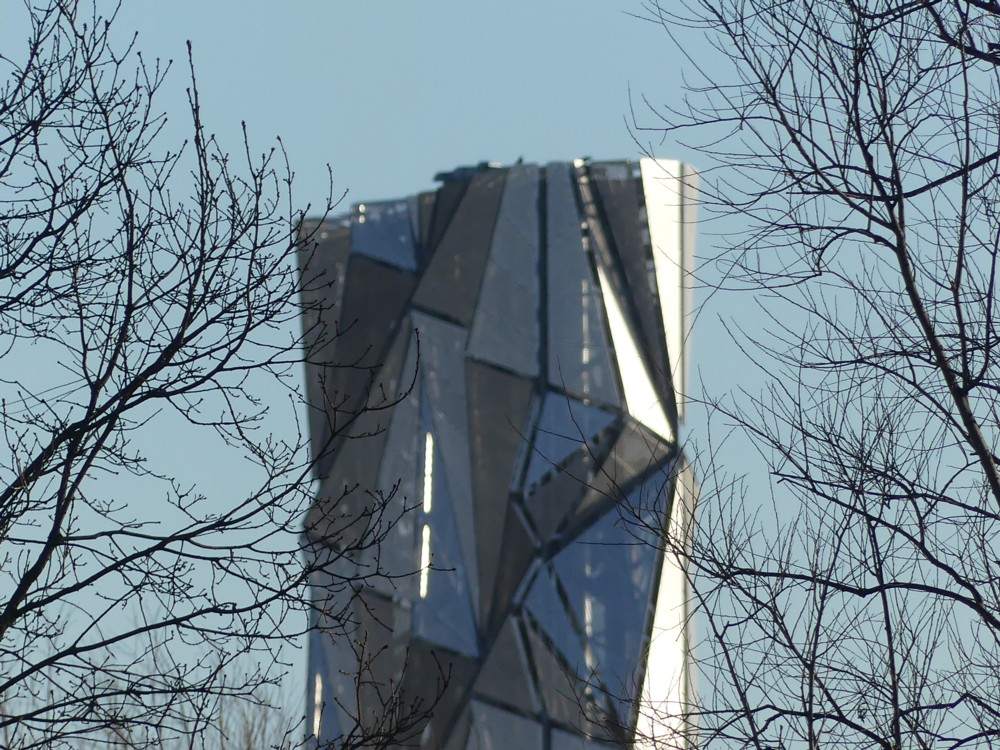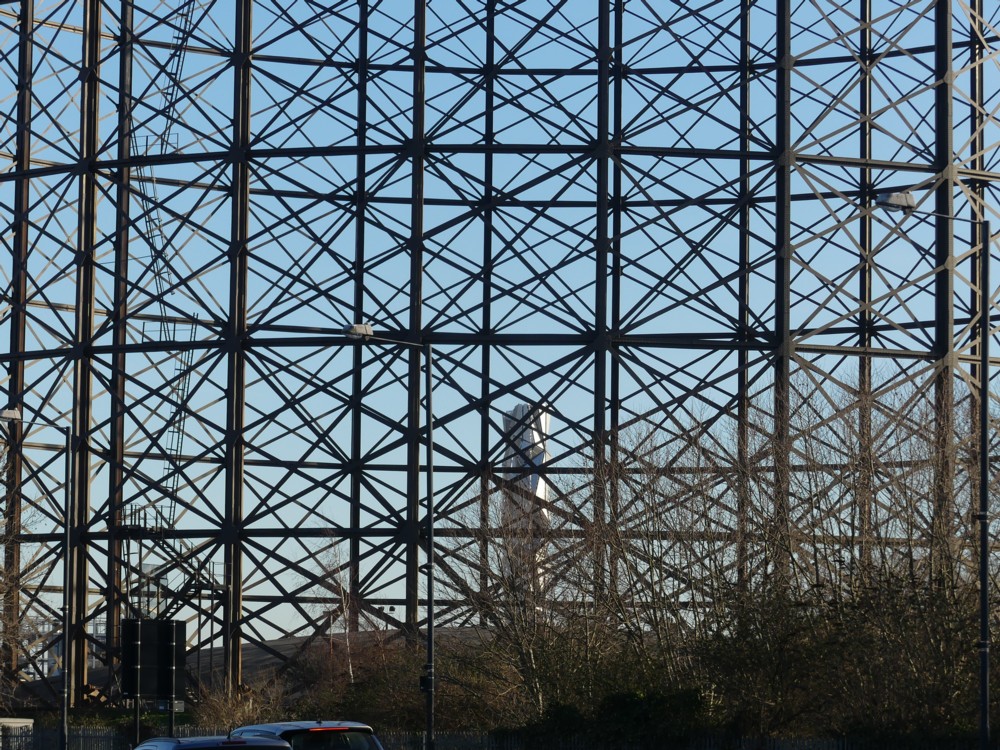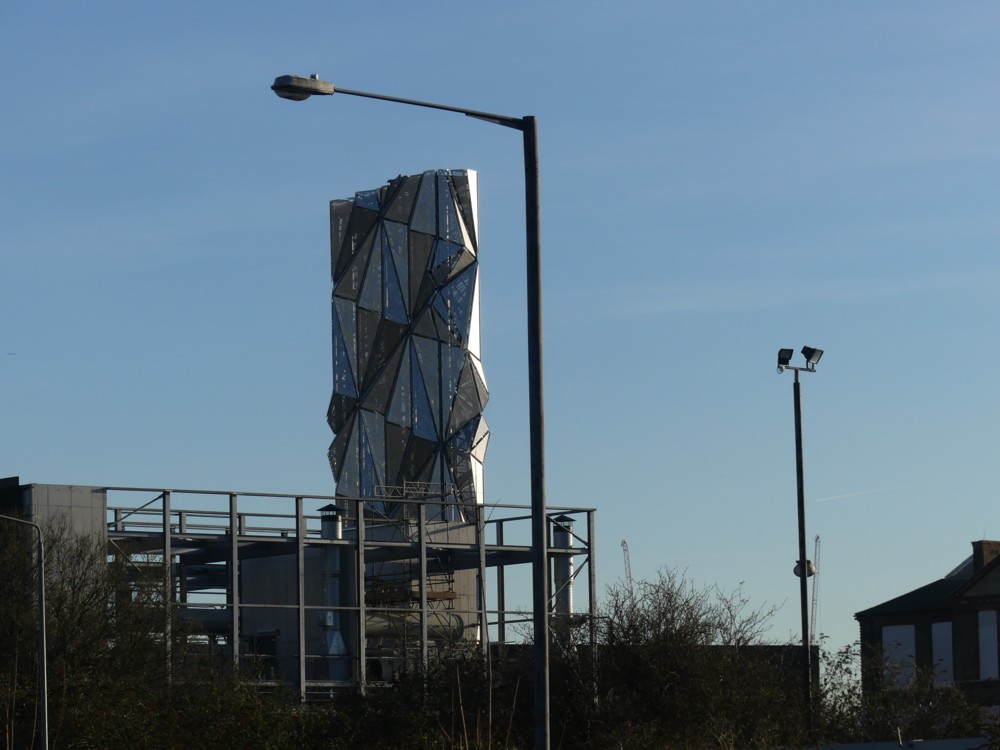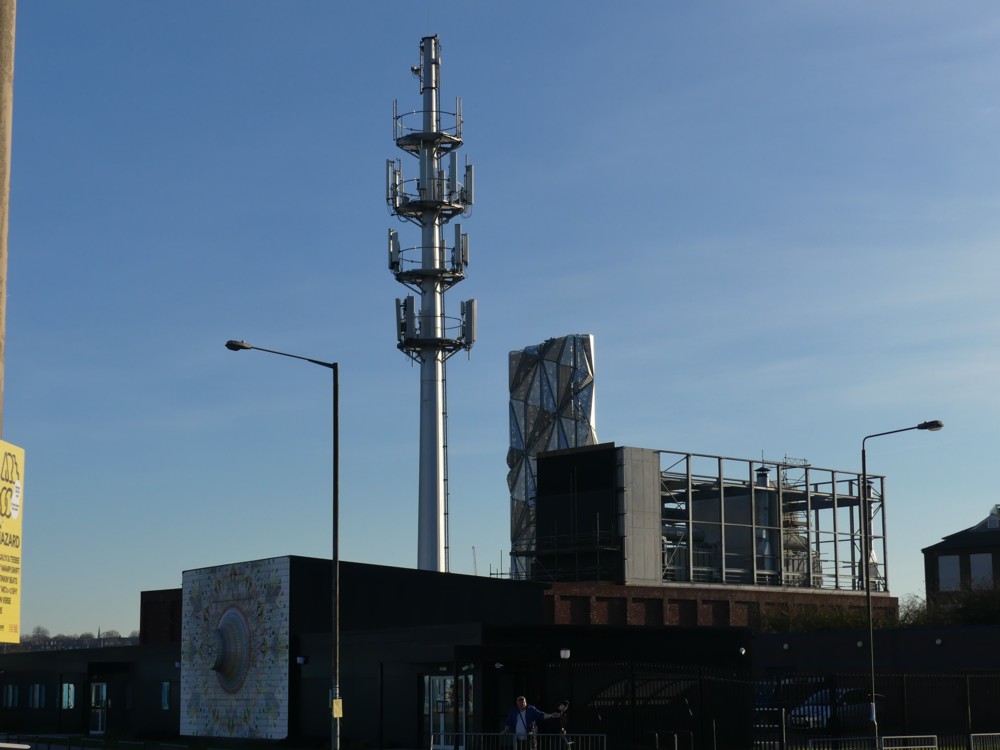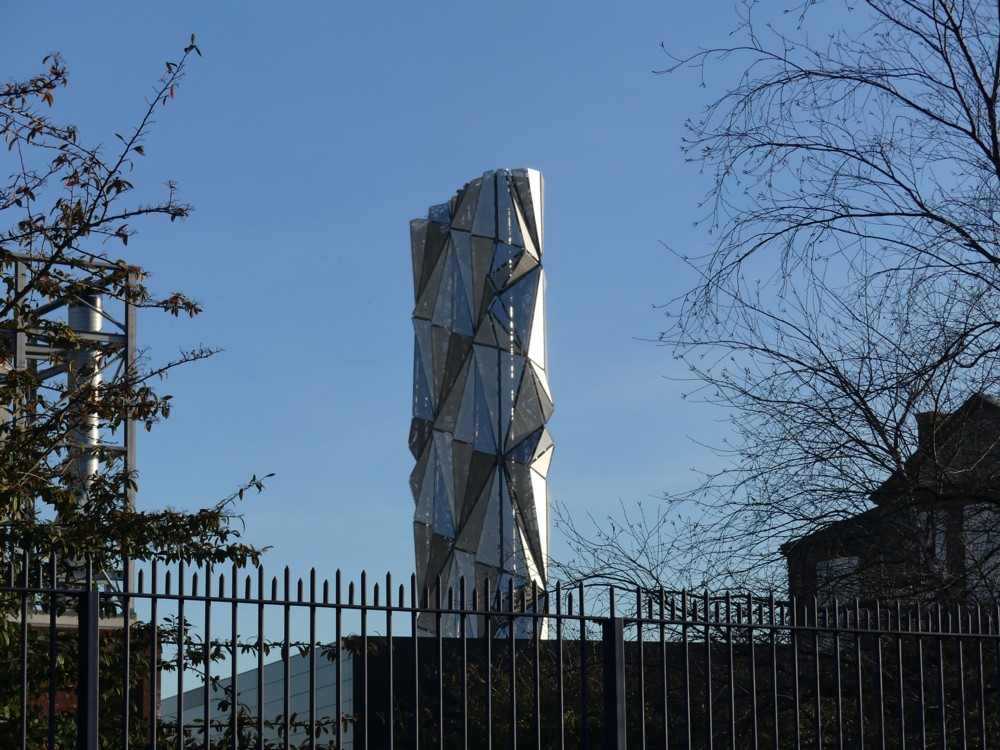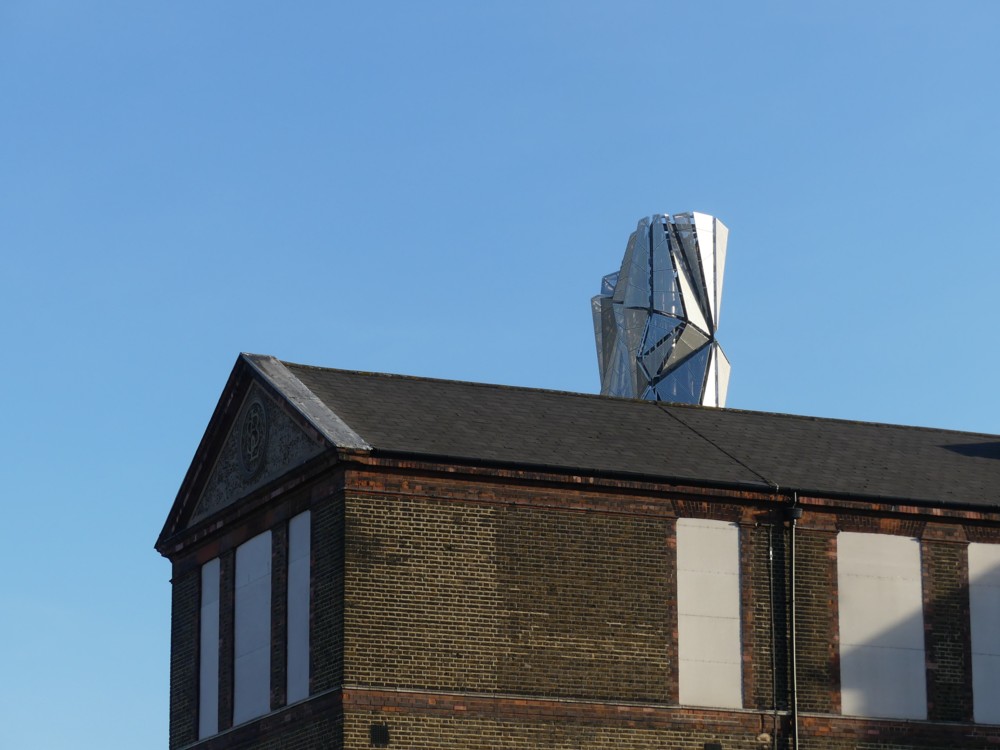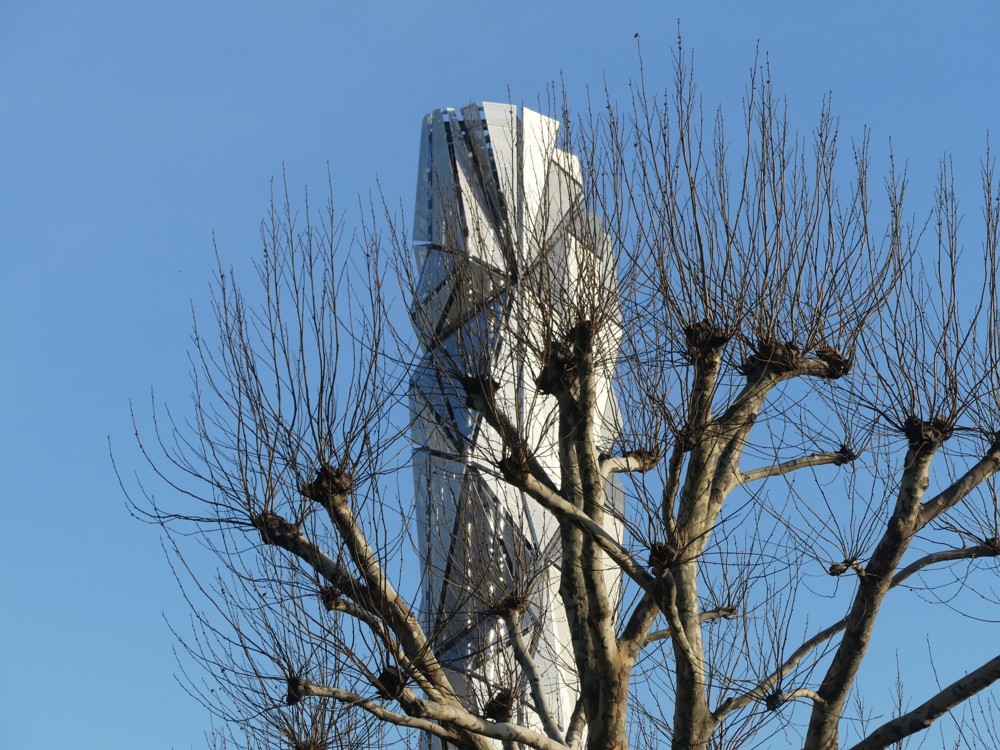My expedition to check out the Optic Cloak got me appreciating the new version of the Greenwich Peninsula, the post-Dome version, that is now taking shape.
Here is a picture of it, one of those computer fake photo things:
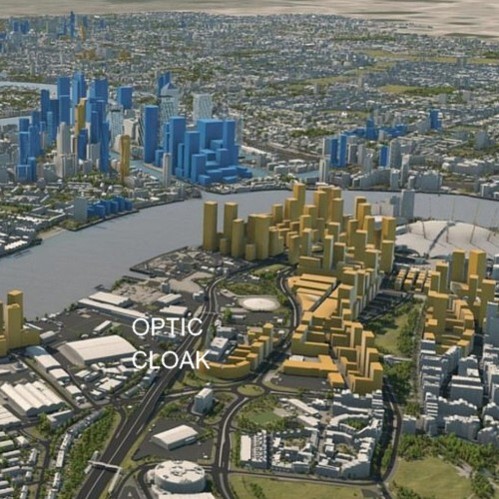
The Optic Cloak is an invisible smudge of grey, just after the C of OPTIC and just above the K of CLOAK. That’s because this picture is not about the truth as such, but about new tall buildings, and the Optic Cloak, although quite tall, is not a building, so, in this picture, it is ignored.
However, what the above photo does show is the big double-barrelled road which takes traffic into and from the Blackwall Tunnel. And you get a great look at this mighty traffic artery if you climb up onto a footbridge that takes you over it. Over it if, for instance, you are walking south from North Greenwich tube station, in order to get a closer-up view, from the West, across the big road, than you’d get otherwise, of the Optic Cloak, as I was when I went there, however many weeks ago it was.
You can just about make out this footbridge in the picture above, just above and to the right of the C of COPTIC.
Here are a couple of photos that I photoed of this footbridge:
And here are a couple of views from it, of the Optic Cloak:
But I especially liked the sort of views you get from this footbridge, looking north, towards the Blackwall Tunnel:
Most of the towers in the distance there are across the river, in Docklands, and already that view, as you approach the Blackwall Tunnel is quite something. As the Greenwich Peninsula itself fills up with more towers, it will look even more mini-Manhattan-ish.
Here are photos I took from the bridge of a couple of interesting vehicles, going north (left) and south (right):
Plus, here is a close-up of that roof clutter, in the left hand of the two looking north photos, above:
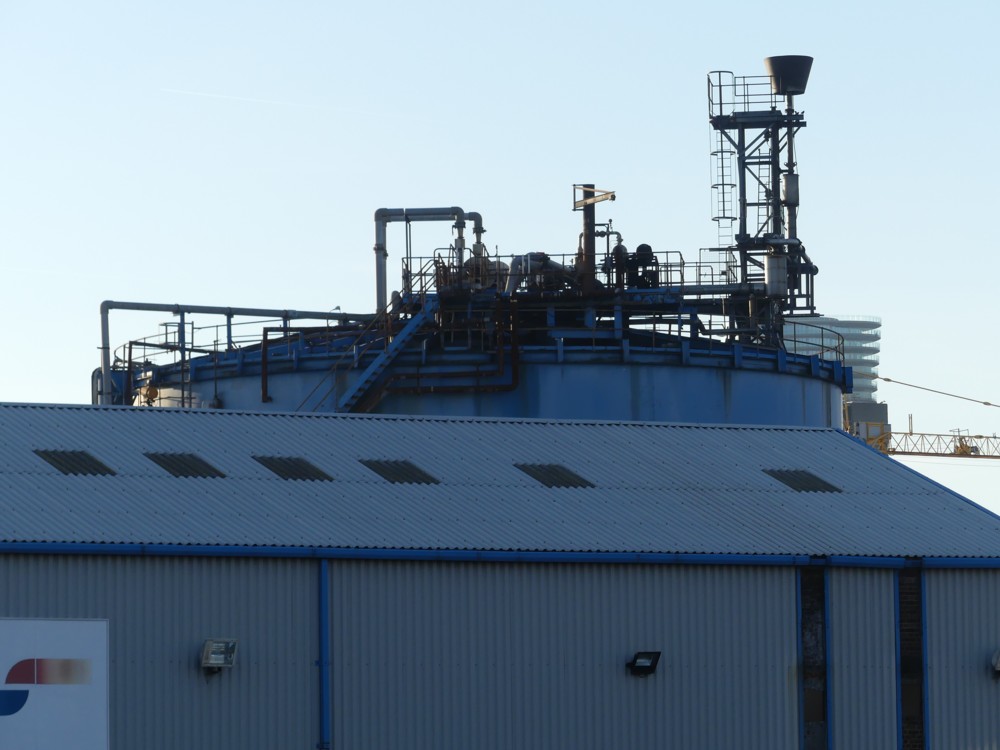
This roof clutter makes a point, as do those two views looking north, and the traffic. This new Greenwich Peninsula has the feeling of old-school work getting done, just as I presume the old one had. Stuff that really hurts if you drop it on your foot is being made, modified, bought and sold, in this particular part of London, just as it always was. Noxious gasses and fluids are being propelled hither and thither, in pipes and cans and lorries. You get the feeling that this isn’t going to stop any time soon, the way it has in Docklands.
It could just be all that Blackwall Tunnel traffic thundering by which gives off that feeling. However, I don’t think so, if only because the thundering traffic creates the sort of place where the Financial Services Industry wouldn’t want to be.
Here, finally, is the kind of close-up of the Optic Cloak that I had come for …:
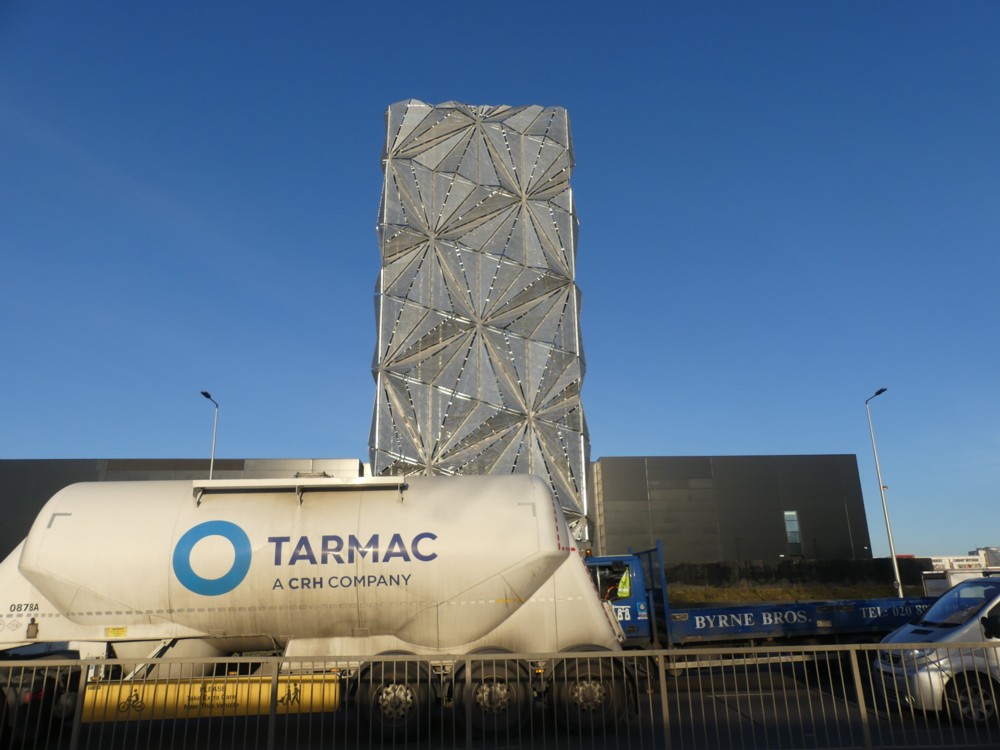
.. with a lorry roaring by, full of noxious fluid.
There can be no higher praise for the Optic Cloak than to say that it fits right in with all this hustle and bustle and noise. Indeed, it dominates it. It presides contentedly over it. Most “Art” in such a place would look ridiculous.
